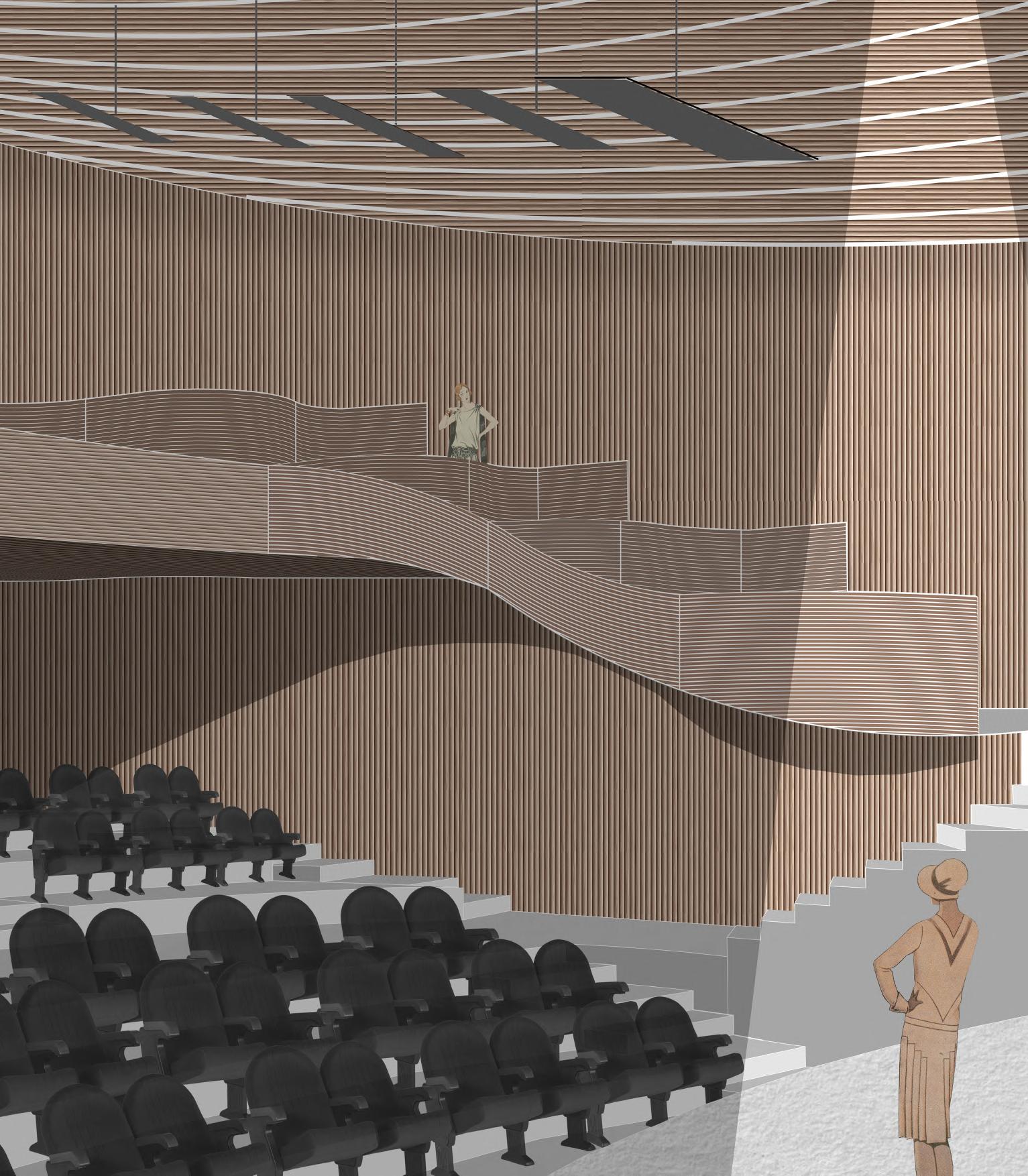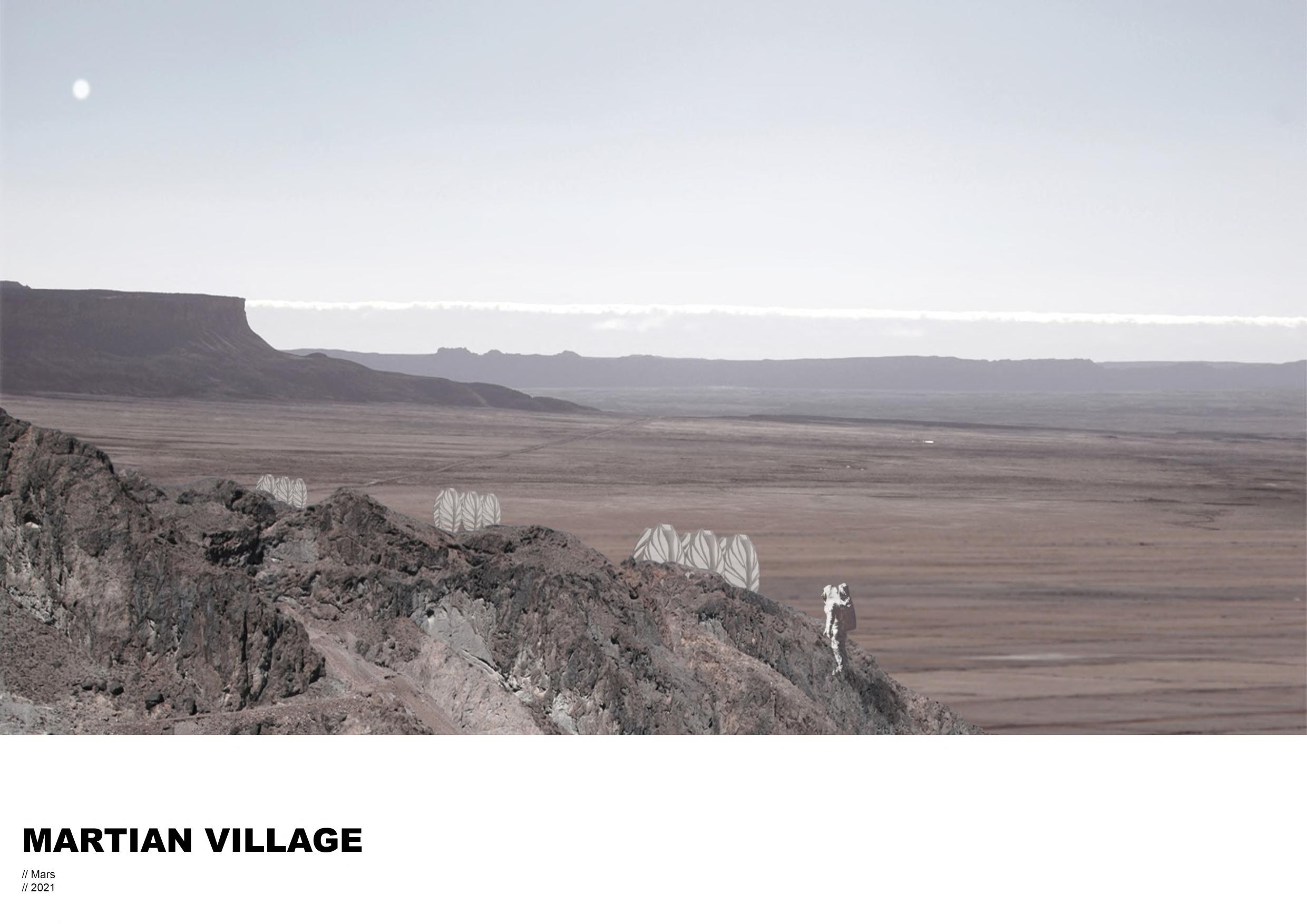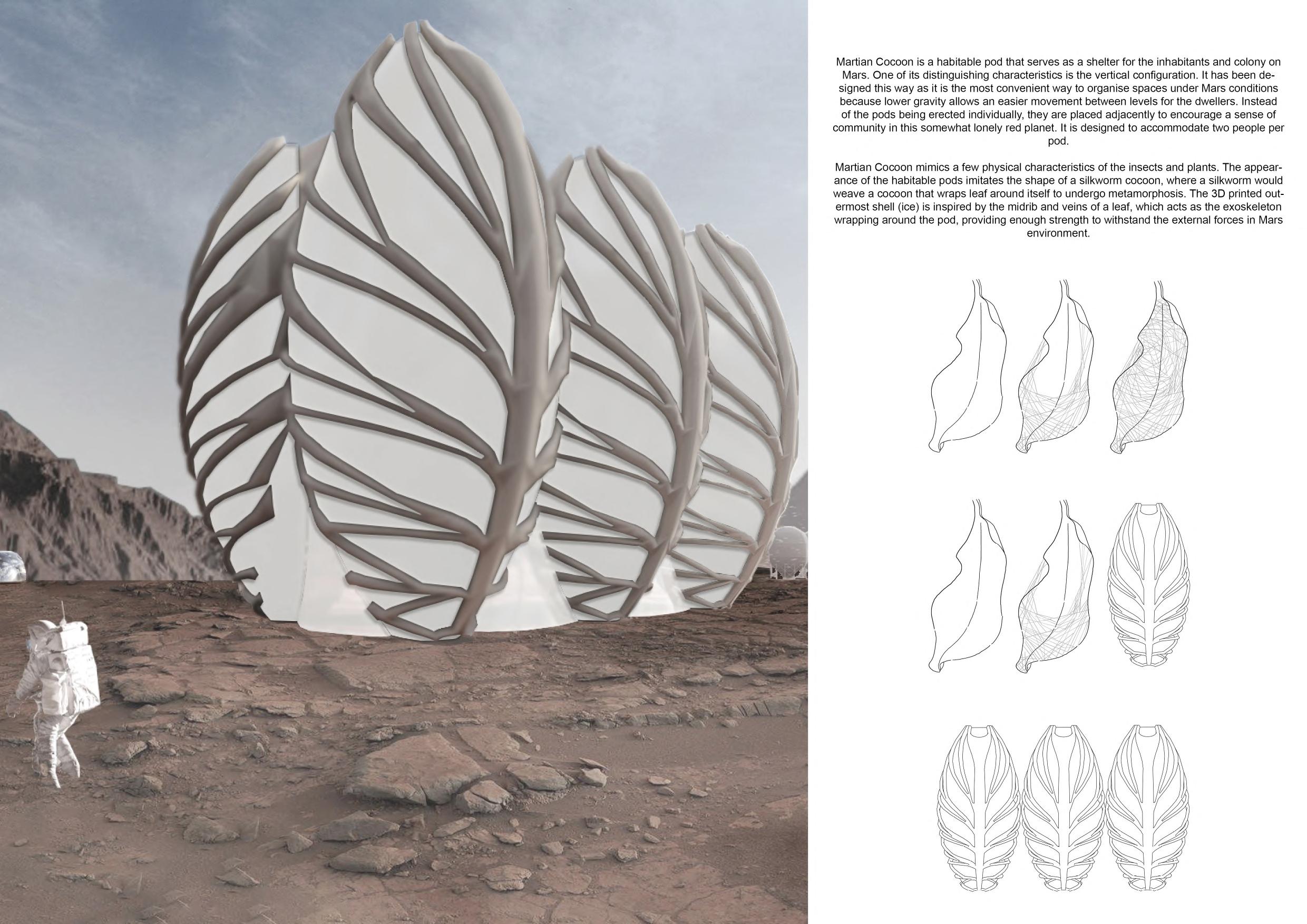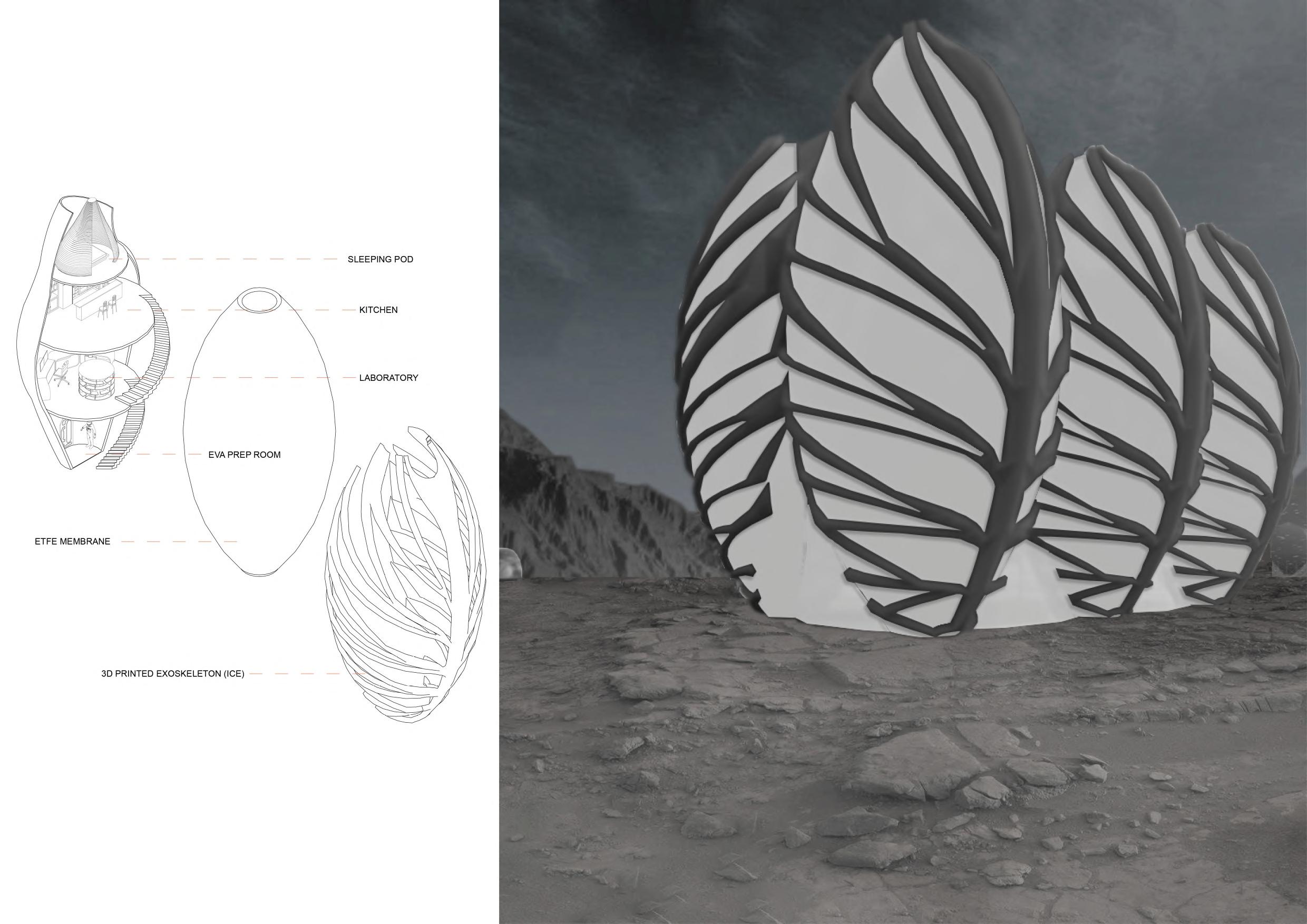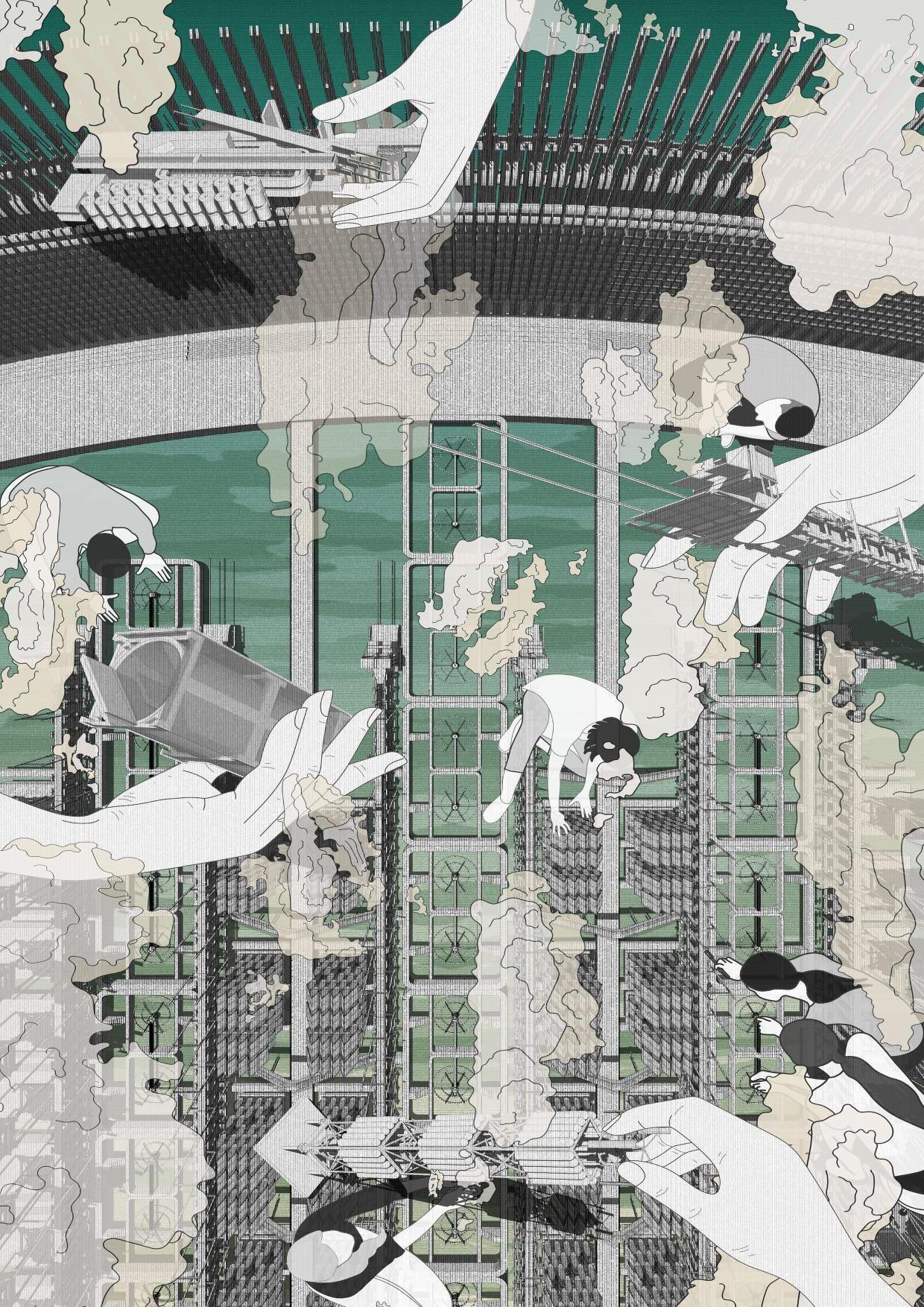PORTFOLIO



What if climate change is inevitable? Fast forward to the year 2100, the most populated cities, including New York, London, Tokyo, Shanghai, and many others, have undergone an irreversible change. Droughts, wildfires, and deserts affect a large portion of the planet’s broad middle band, while increasingly frequent superstorms ruin agricultural lands by bringing seawater further inland in coastal regions. These effects will consequently cause a mass migration of human population polewards to escape these harsh climates. However, there are massive supply of renewable energy resources in the middle band of the Earth that can be extracted and utilised.
The thesis employs this hypothetical premise to ask ‘how can civilisation survive and strive in these harsh climates?’ and ‘what is the re-imagined role of cities to suggest a new energy infrastructure network between cities in different continents’. ‘The Collective’, the new capital city of North America is located at Lower Manhattan, New York. It is a speculative driver and investigative model to cultivate self sufficiency and green sustainability. The narrative aims to re-unite a fractured world in the year 2100, providing a solution for the energy crisis, food shortages and the increasing global displacement of the population. While the United Nations performs as the centralised political body of Earth, the collectives are the heart of the capital.

27th
Of course, as a child, I didn’t notice these things, having nothing to compare it to. I was just a small boy, enchanted by my small world.
Until one summer, millions of locusts showed up out of nowhere. They came in swarms and destroyed large areas of vegetation and crops, threatening food security and livelihoods of the populations.

My mother was puzzled and looked them up. They were thought to be extinct in the States and were supposed to be in Africa. It was not until much later that we realised they were a sign of what was to come.
Put a frog in a pot of cold water and turn the heat on. The water warms so gradually that the frog doesn’t notice.
It never realises the precise moment it’s cooked.
19th June 2100
New York...

This once glorious city whose lights at night could be seen for miles, empty now. It’s towering skyscrapers once a testament to our ingenuity, now stand as crumbling monuments to our demise. I can ask myself what happened, but where do I begin? With the droughts, the famines, the plague? It began long before all that.
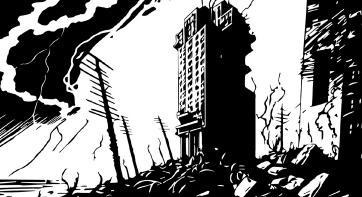
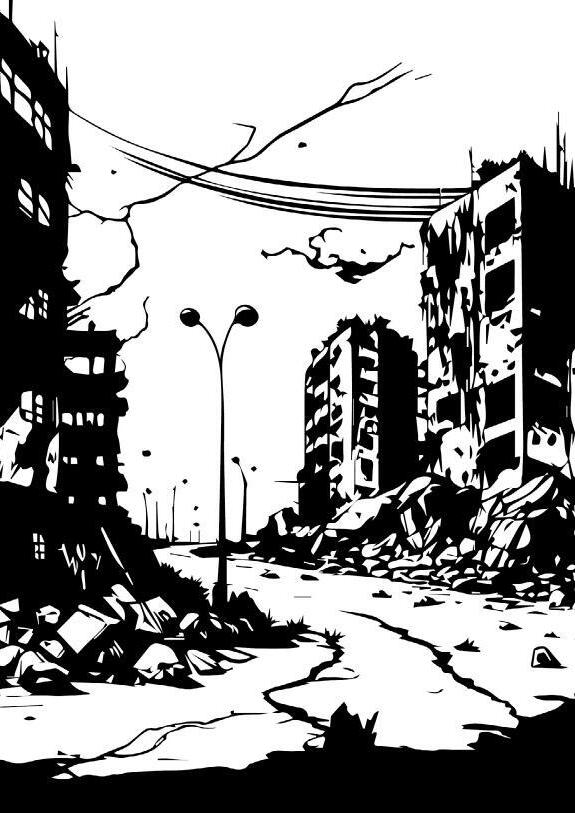
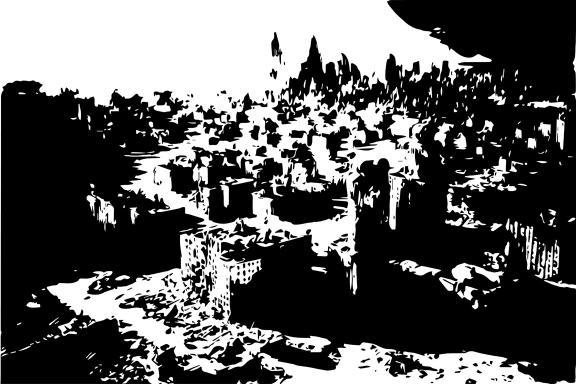
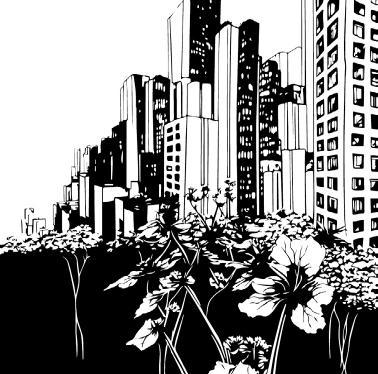
07th July 2030
Iwasborn 07th July 2030. Civilisation was at a crossroads. We were in a race for our future. The world had never known such an uncertainty. We were used to having what we wanted and doing what we wanted.
Although the world I was born into was running out of so much, water, oil, land, I remember a loving family, a big house, green lawn, more water than we knew what to do with.

The evacuation centre was as big as an airplane hangar, maybe it was an airplane hangar. It was so jammed with people, it was hard to move. It was hot. It was noisy.
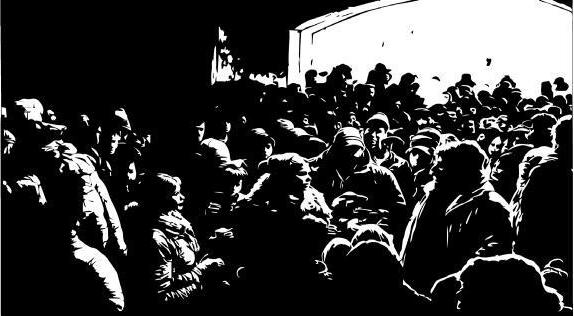
18th October 2035
Ilived through it all. My story is everyone’s story, the story of the last century.
My parents must have known what was happening. We had an electric car and recycled. And it wasn’t just us, smart imaginative people everywhere were working furiously on solutions. Our government was pouring money into alternative energy. It seemed like everyone was growing their own vegetable garden, windmills were sprouting up all over.
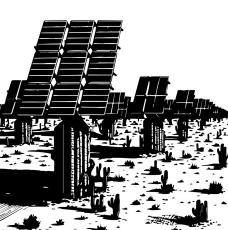
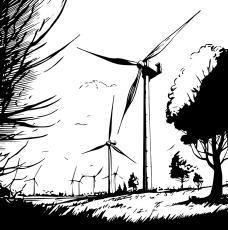
Big storms weren’t unusual, but this one was bigger than the others. They were calling it the storm of the century, Hurricane Maria packing Category 5 winds. All coastal regions were being evacuated as this storm made landfall and packed tremendous storm surge.
My mother was a nurse and she wouldn’t leave until all the sicks were evacuated from the hospital. My father was afraid we wouldn’t get out in time. I was afraid too.


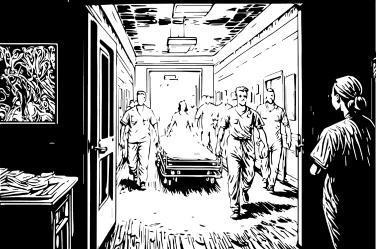
On the news...
Ice-cap melting...
Some 250,000 Bangladeshi refugees fleeing from last week’s devastating cyclone are massing on the Indian border.
Sea-level rise...

Storm surge...

Crop production decline...
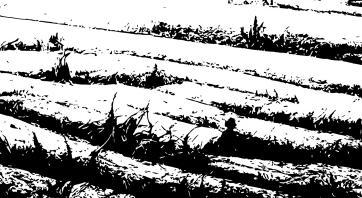
Mass migration...

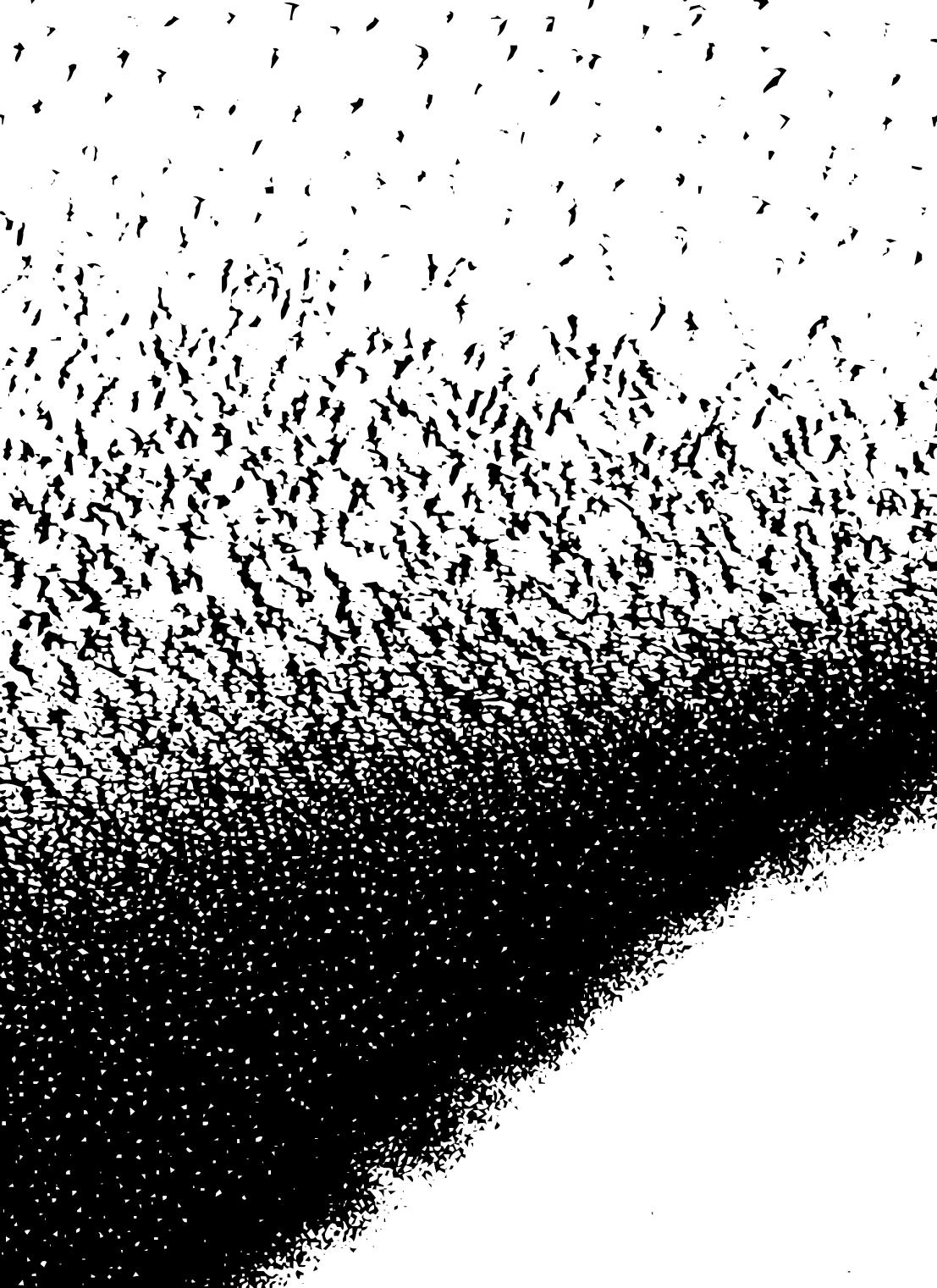

P
eople were beginning to understand. But the time was running out and nature was always one step ahead.
We were there for weeks. There was nowhere for us to go. Nowhere for anybody to go. We watched the news on TV. I was only five, but it looked to me like the whole world was in trouble.
Thousands riot as China faces it’s worst wheat shortages in decades, the result of seemingly endless drought.
Desertification...


uninhabitable zones
Expanding desert is one of the significant consequences of climate change. One-third of the world’s land mass is classified as desert or semi-arid. Desertification has become a growing issue in Asia, Africa, and Europe. By 2100, conservative predictions show subtropical desert regions growing by roughly 10%, while business-as-usual scenarios see one-third of the world completely desertified.
Higher-intensity cyclonic storms and storm surges will pose a growing and significant threat, expanding their area of influence farther toward the poles as oceans warm.
Such catastrophes are expected to spur widespread migrations away from low-lying coastal regions in a future with unchecked climate change, especially if nothing is done to prepare these locations to defend against storm surge—a more realistic scenario for low- and middle-income countries.
uninhabitable dry areas
extreme weather and storm surges
tropical cyclones
high risk areas for forest fires
areas of scarce water resources
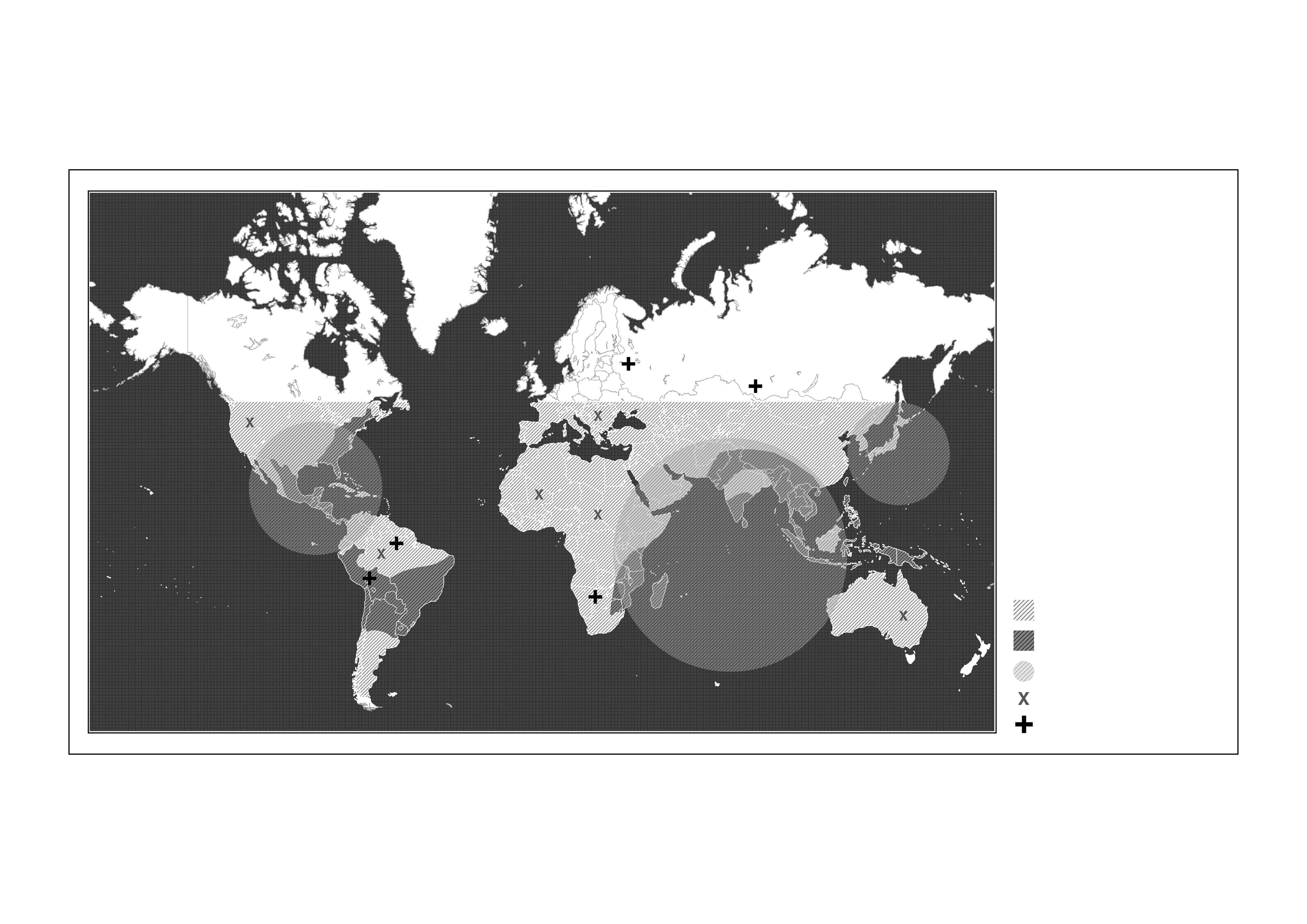
This was the first time the whole planet was in this kind of climate crisis. This prompted world leaders to gather in Washington, DC to attend an emergency global summit meeting.

The world finally reached a historic climate agreement that would see the growth of two types of cities; production cities and compact cities. These cities share a cross-continent and interconnected energy infrastructure. The system implemented creates a complete loop so the cities then consume and produce for one another.
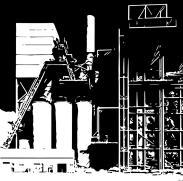
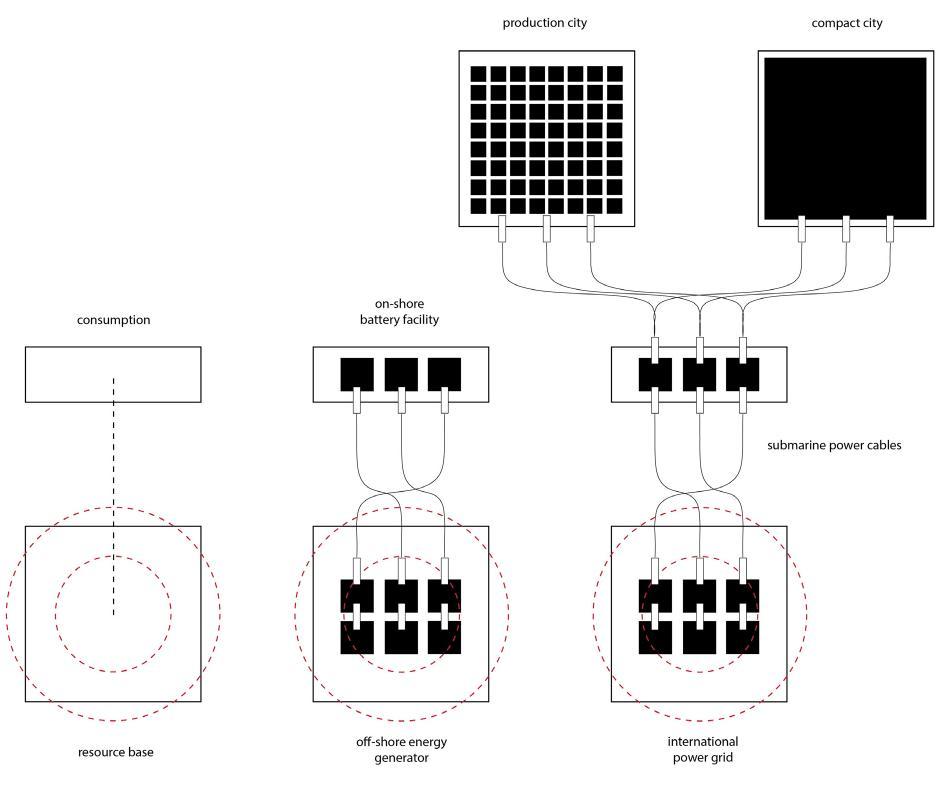
These cities were selected as they represented the broadest range of geographic and climatic conditions possible by being dispersed throughout several continents. Moscow and Beijing, two already densely inhabited cities, were the ones used to experiment with different approaches to increase density, particularly verticality. It made sense to select an elevated and relatively less developed site since it was expected that by 2100, certain areas of the city would need to migrate. Given the anticipated increase in world population, it was assumed that cities would grow vertically denser and that unused or unfavourable sites would become available for future urban growth. Beijing was selected because it dealt with the pollution and waste problem. Initially, a small town, Nuuk, Greenland, would be a metropolis connected to New York because of its strategically advantageous location, centrally located to what would become the ‘new world’ when most people live poleward.
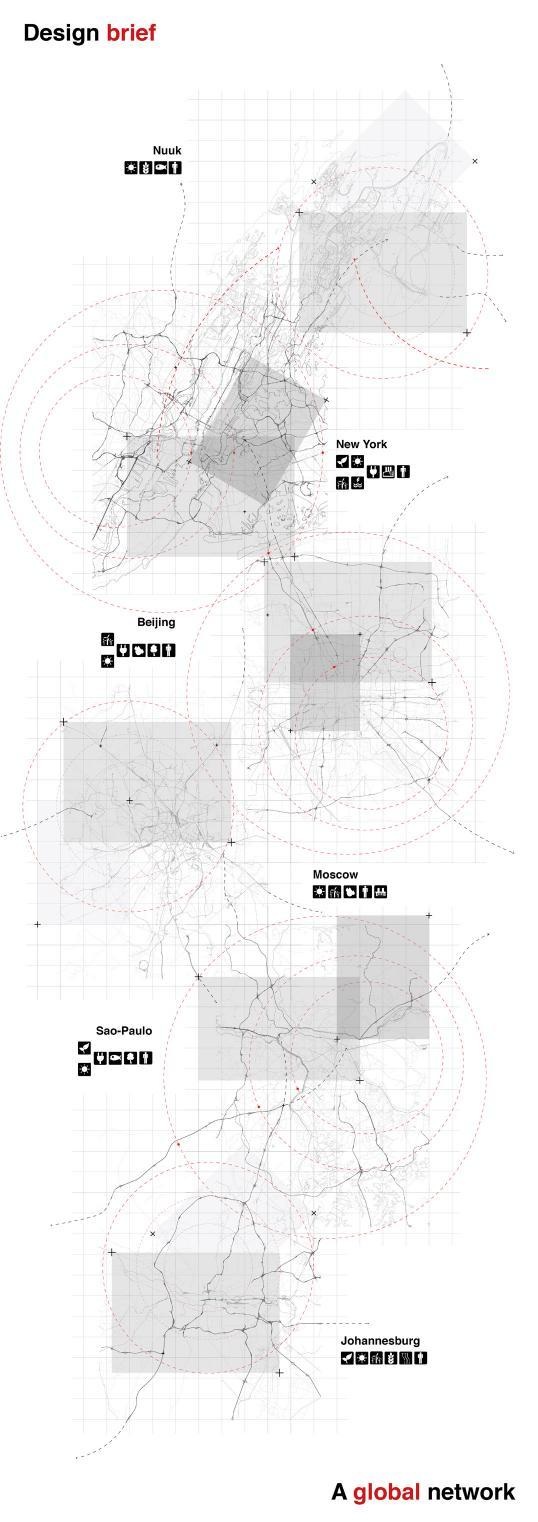
Cities are destroyed by increasingly frequent storm surges and many buildings and infrastructures are destroyed. Certain parts of the cities are devastated beyond repair and are left in a derelict state.
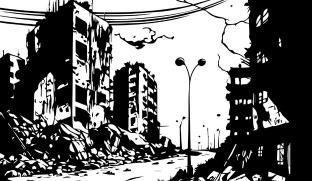
Maintenance workers are deployed to these devastated cities to demolish the remaining buildings and to collect the concrete debris to be dispatched to recycling facilities.
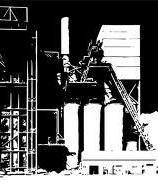
The collected concrete debris are transported to the recycling facilities to be recycled into new concrete blocks. The recycled concrete blocks are used in new construction projects.
This diagram illustrates the masterplan that can be implemented as a world-wide strategy for providing a solution to the energy crisis in Year 2100. Renewable energy(s) are extracted from the source and converted into electrical energy. It is then being transferred and supplied to both production cities and compact cities through submarine power cables.


global renewable energy(s)
It is estimated that by 2100, we will need enough energy to fulfil the needs of 10 billion people. The middle swath in 2100, although being scorched and destroyed by heat waves and storms, will still contain vast amounts of resources that may be harnessed and extracted.
A base supply from steady geothermal or tidal power, relying on the wind at night when it is often plentiful, using solar by day and turning to a reliable source such as hydroelectric that can be turned on and off quickly to smooth out supply or meet peak demand. Also helpful is interconnecting geographically dispersed sources to back up one another.
areas that remain as desert in 2100 areas that become desert in 2100
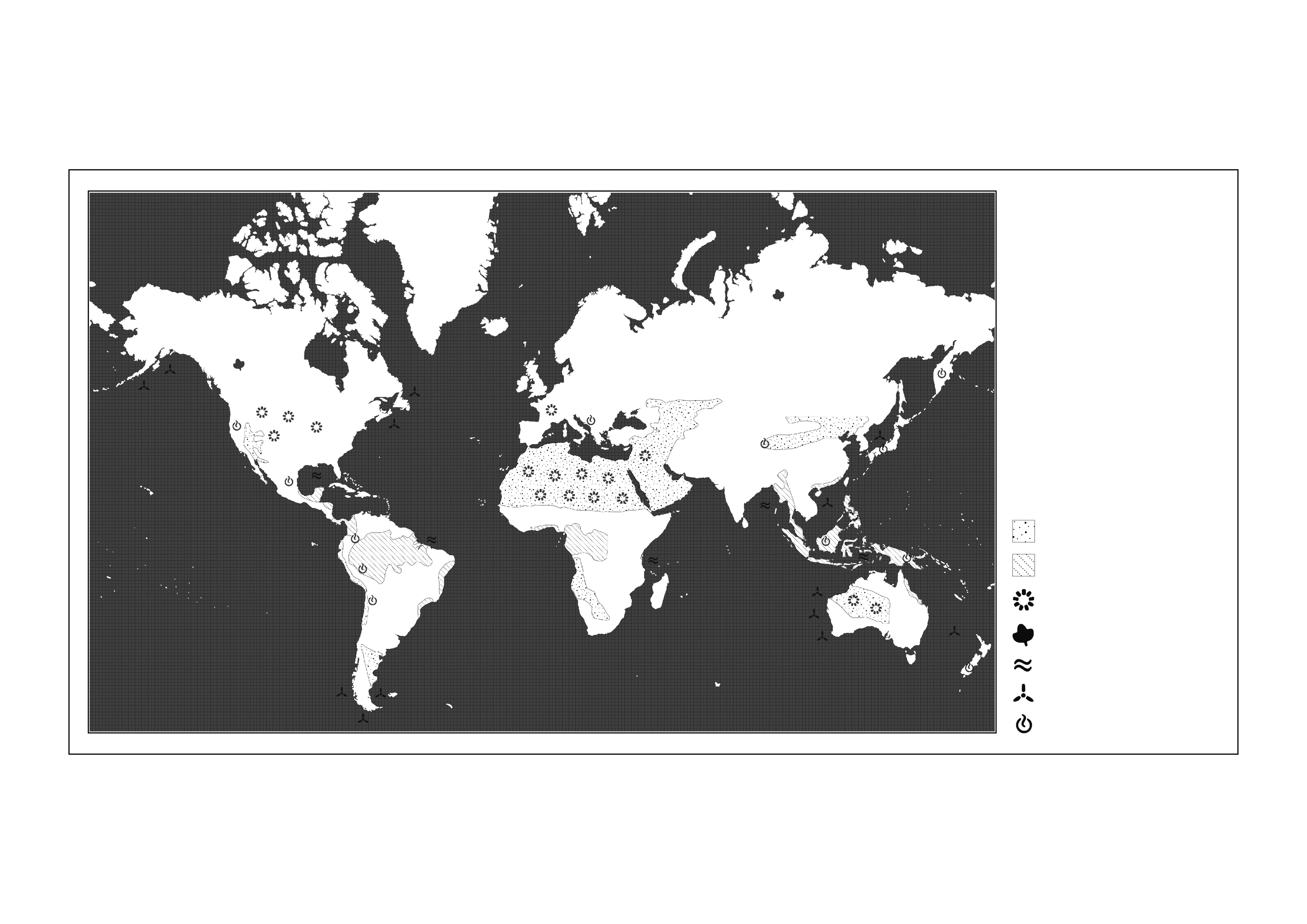
solar energy
biomass energy
tidal energy
wind energy
geothermal energy
Renewable energy can be challenging as a primary source since it frequently depends on fluctuating natural conditions. Energy storage technology advancements will enable higher efficiency, cheaper production costs, and the ability to respond to demand, which will alleviate the inconsistency problem affecting renewable energy output, allowing everyone access to electricity. Several locations for energy production in both compact and production cities are chosen based on the available energy sources, the amount of power they can create, and ways to store it. The system implemented creates a complete loop so the cities then consume and produce for one another. Production cities are mainly located in the uninhabitable zones, the middle band of the Earth. Compact cities are located mainly polewards, away from the natural disaster regions.
areas that remain as desert in 2100
areas that become desert in 2100 global migration patterns
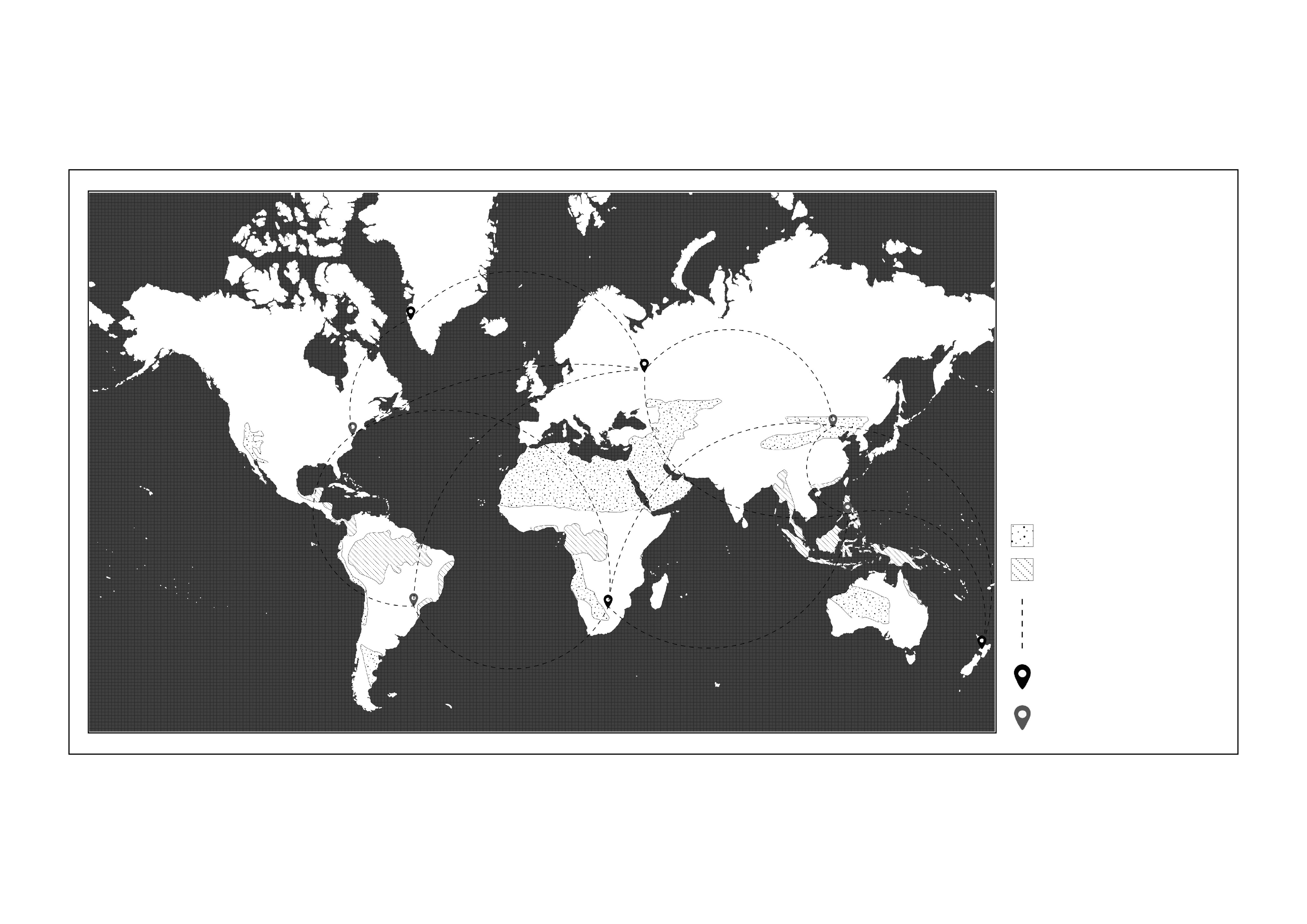
compact cities
production cities

Programmes are arranged in a way that is much more linear compared to compact cities.
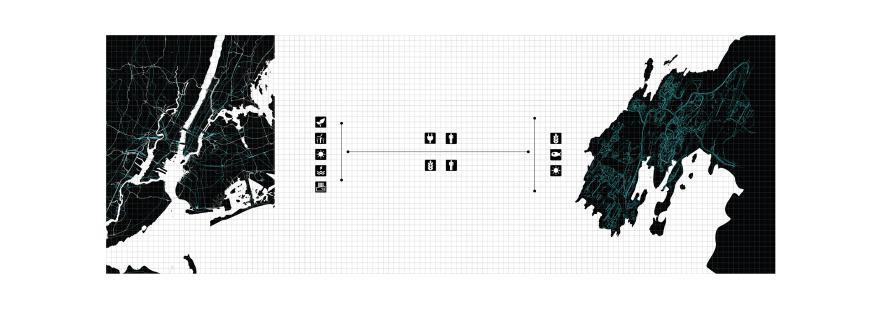

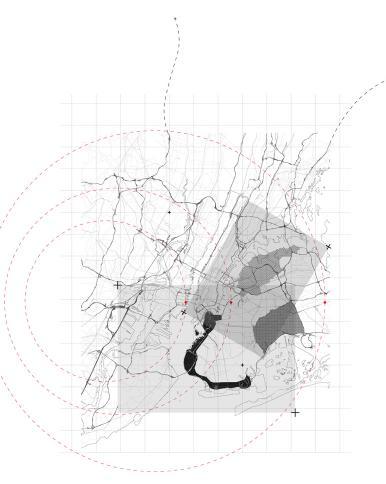
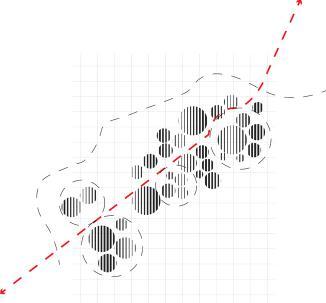
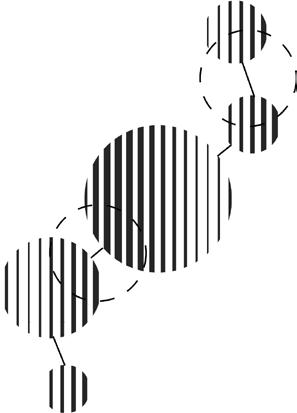
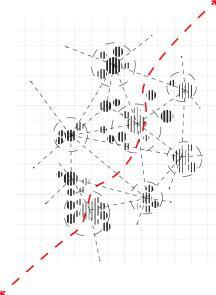
Transportation

Temporary housing
Public space
Farming area
Energy generation
Recycling area
Carbon capture
New York
Water management
Manufacturing area
Energy storage
Programmes are arranged closer to one another to maximize land-use. A combination of high-density and mixed-use developments ensures an increase in overall accessibility.
Bullet train
Bike pathway
Superbus
Electric car
Pedestrian pathway
Green spaces
Energy generation
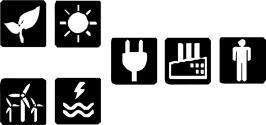

Greenhouse
Temperature 2023
High: 29°C
Low: 3°C
Avg: 16°C
Temperature 2100 High: 36°C
Low: 10°C
Avg: 23°C
Population 2023
8,804,190
Production City Compact City
Temperature 2023
High: 7°C
Low: -8°C
Avg: -1°C
Temperature 2100 High: 13°C
Low: -2°C
Avg: 5°C
Population 2023
19,261
Lower Manhattan is chosen as the site for the proposal. The high density skyscrapers in the city are destroyed due to severe storms and this leaves a large amount of recyclable materials i.e. concrete. The concrete debris recovered are recycled into new construction material to build new city infrastructures.
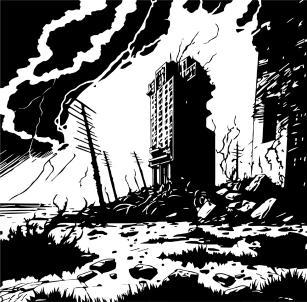


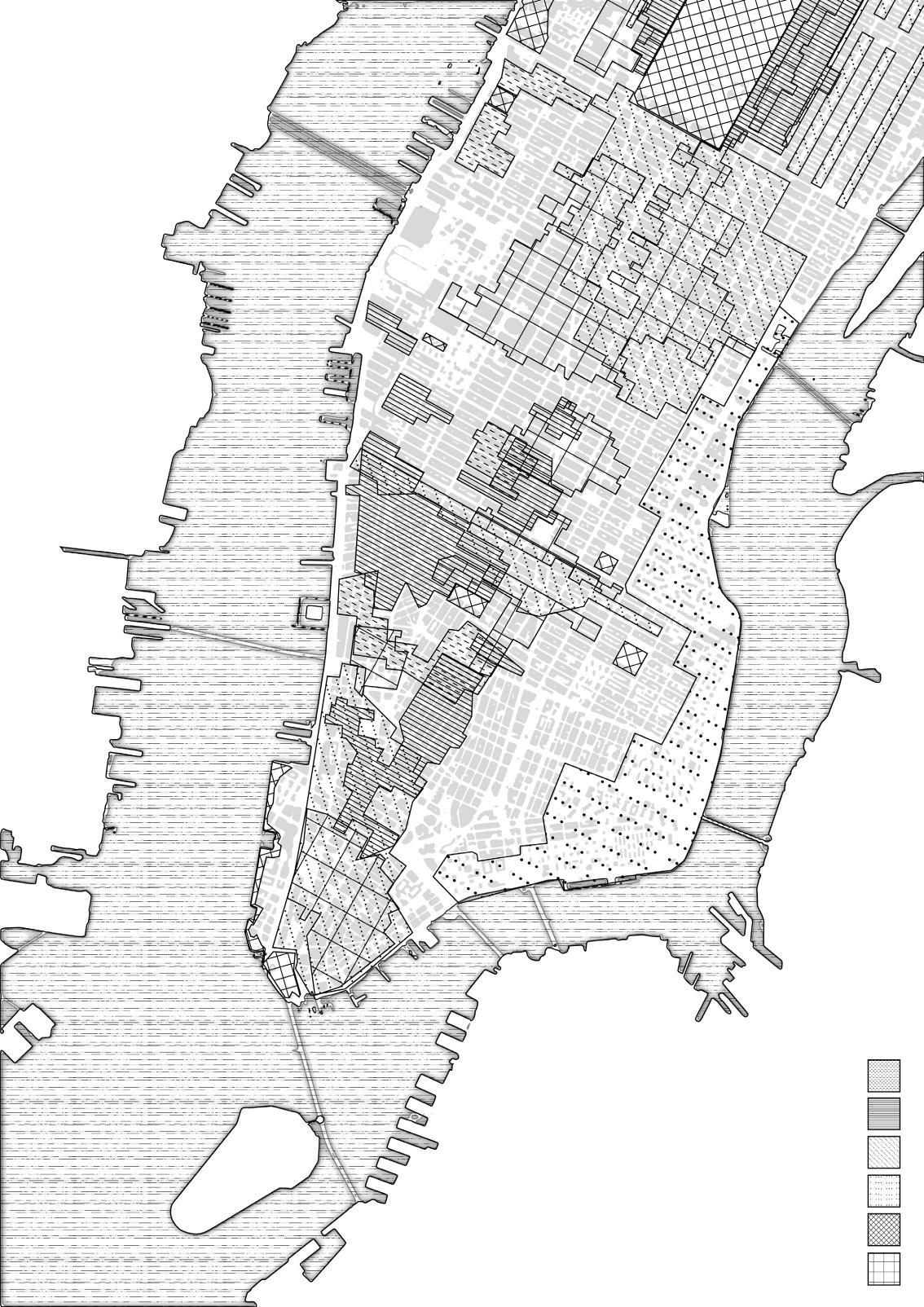
Hudson River
historic districts commercial use high density greeneries
parks & gardens

financial development

 Lower Manhattan Site Analysis
Lower Manhattan Site Condition
New York Flood Zones in Year 2100
mass migration
wetland state
devastated city
Lower Manhattan Site Analysis
Lower Manhattan Site Condition
New York Flood Zones in Year 2100
mass migration
wetland state
devastated city

The United Nations performs as the centralised political body of Earth, essentially the world government. It started to gain serious political power as the need to deal with global issues like rising sea levels, overpopulation, and mass relocation necessitated a level of bureaucracy above independent nations.


The primary focus of the Maintainers would be to maintain law and order, ensuring the safety and security of the population. They would be responsible for protecting the community from external threats, such as bandits, or hostile factions. This could involve patrolling, setting up checkpoints, and responding to emergencies. In a scarcity-driven world, the Maintainers also play a role in managing and distributing limited resources fairly and efficiently, preventing hoarding or black-market activities.



They are highly skilled professionals who specialise in designing, developing and maintaining advanced technologies and systems. Their responsibilities include designing and building machineries, communication systems, transportation systems, and infrastructures. They play a crucial role in problem-solving, troubleshooting, and adapting technology to meet the unique challenges of the post-climate change world.
The Growers would primarily focus on aquaponics, which combines aquaculture (fish farming) with hydroponics (soilless plant cultivation) in a symbiotic relationship. Growers would prioritize resource conservation by implementing water-saving techniques, composting, and minimizing waste. They would adapt to the scarcity of resources and practice efficient resource management. Growers need to share their knowledge and skills with others, educating the community on basic farming techniques, food preservation methods, and sustainable practices. This would foster a sense of collective responsibility towards food production and self-sufficiency.

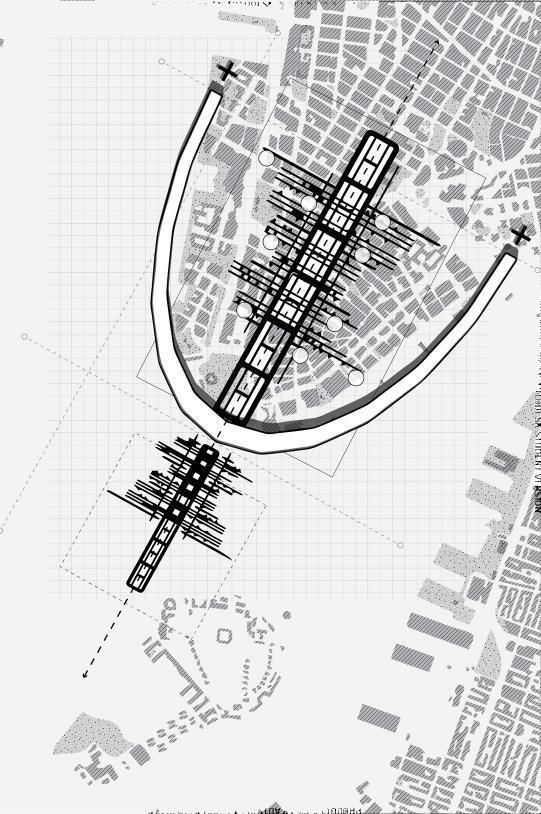
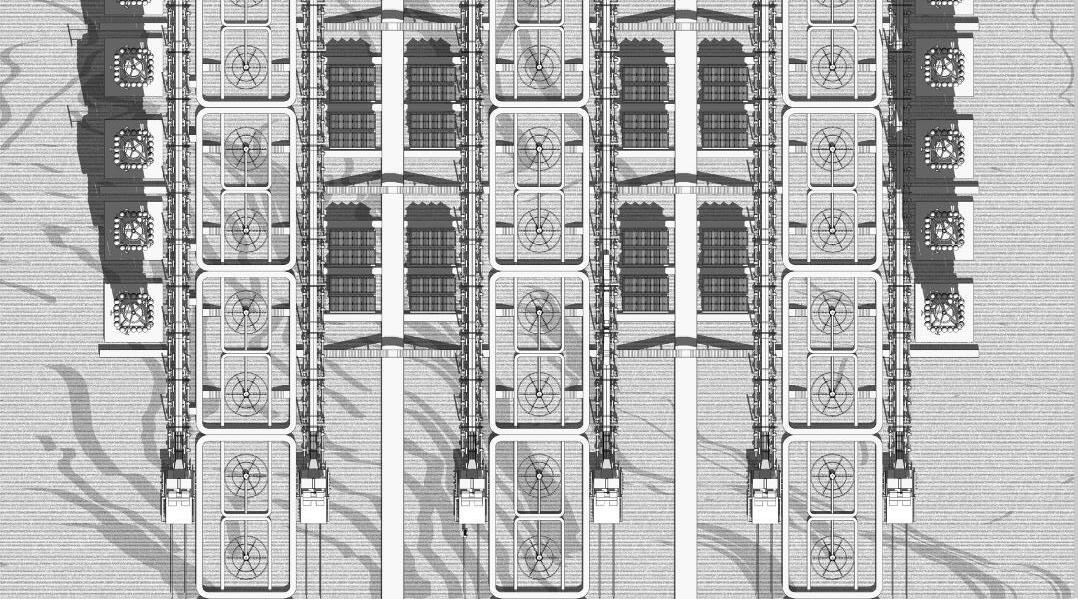

21st January 2050
Dad had been offered a job in New York working on the sea walls designed to protect the city from the rising seas, while I was recruited to join the mandatory “Energy Service”. We were grateful as our family were lucky enough to be able to stay together, while the other teenagers had to travel from Nuuk, Greenland to join the service, away from their families.
The Statue of Liberty greeted us when we first arrived in New York. After all these years, the statue is still standing tall, an icon of freedom, a symbol of welcome to immigrants arriving.
The city was full of hope, energy and promise. You’d walk down the streets and meet each other’s eyes and see a sense of purpose. The project drew thousands of people into the city looking for work. New York City was then, as it had always been, a beacon of hope.
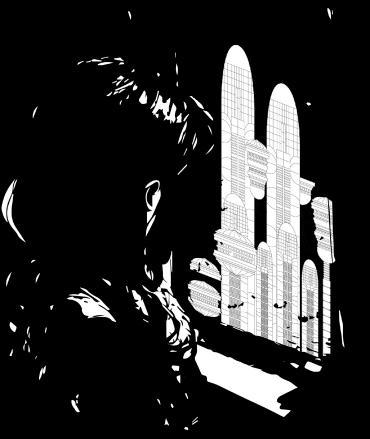
The shaded buildings on site are destroyed due to severe storms. They are demolished and the debris are collected and recycled at recycling facilities to manufacture new construction materials. The construction materials are used in this proposal.
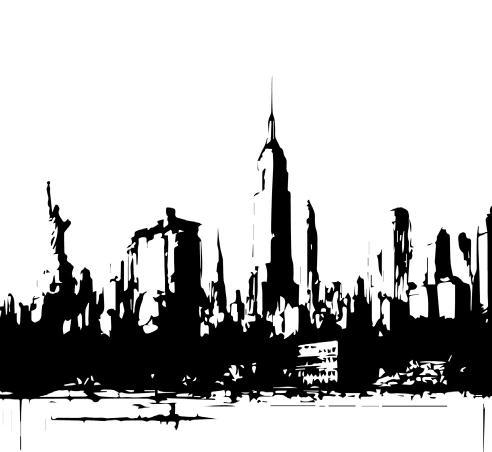
The seawall is to protect areas of human habitation, conservation and leisure activities in the capital. The seawall is a curved megastructure to introduce a dissipative element to deflect the wave energy away from the coast.
The seawall also acts as a floodgate, allowing water to flood the wetlands during periods of extreme drought.
The platforms on the seawall are used as a venue for social events and leisure activities such as a parade during festives period.
The energy is extracted from the ocean through the process of Ocean Thermal Energy Conversion (OTEC). The energy is then being stored in these batteries that are attached to this megastructure (the sea wall).
There are also a set of lift shafts and stairwells on both sides of the megastructure for accessibility in and out of the capital.
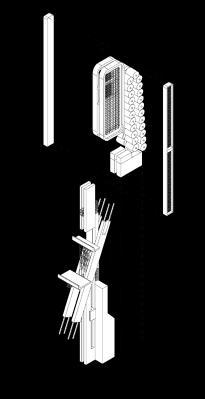
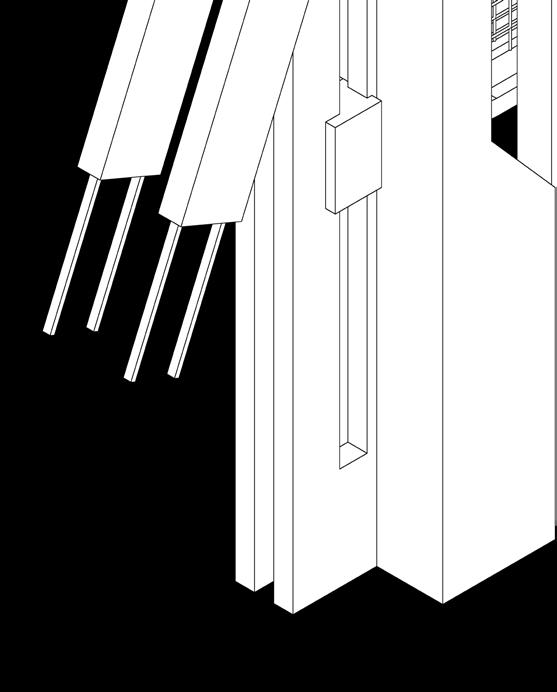
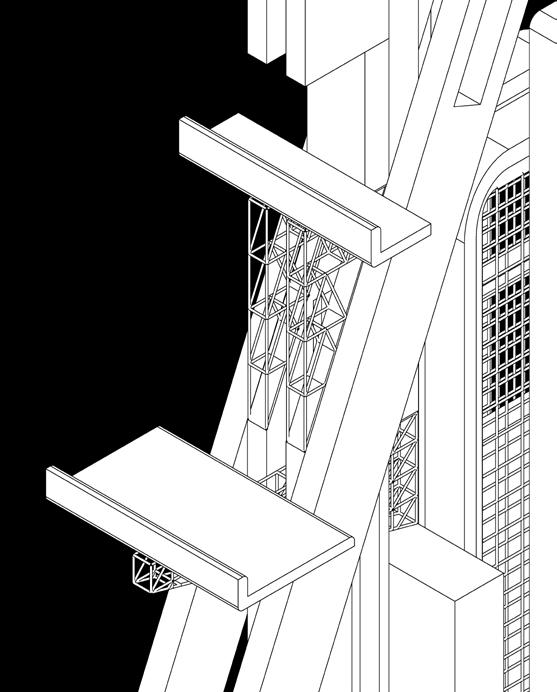
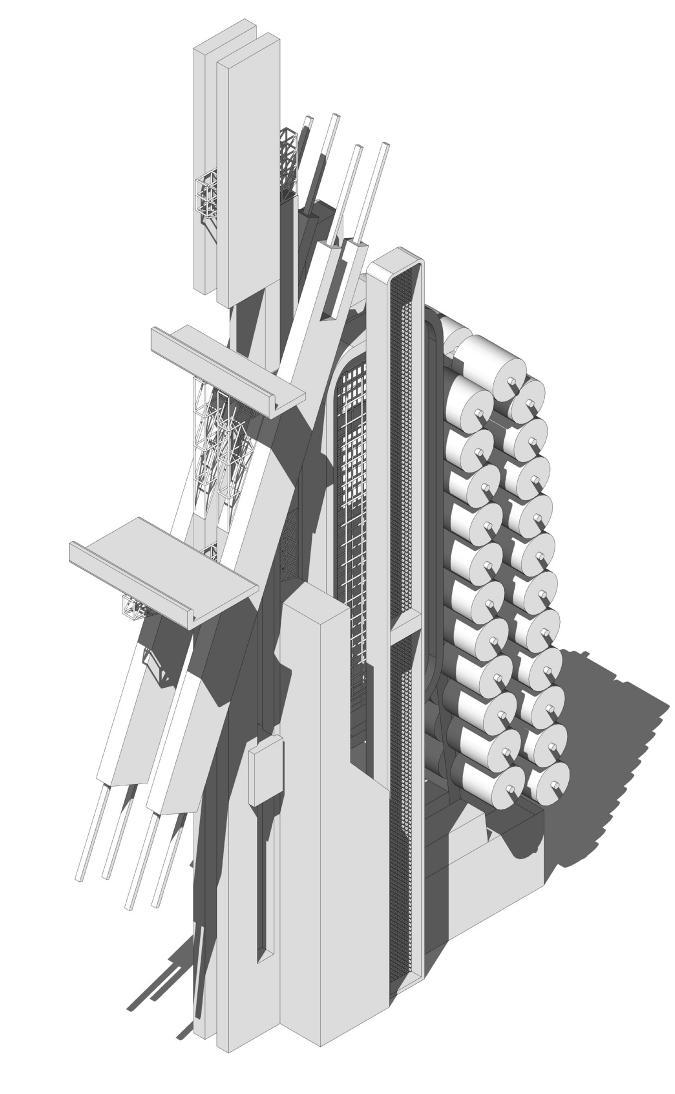
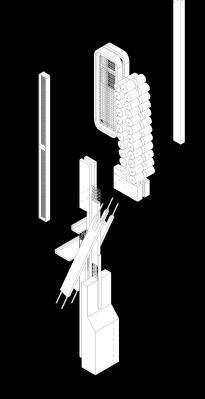
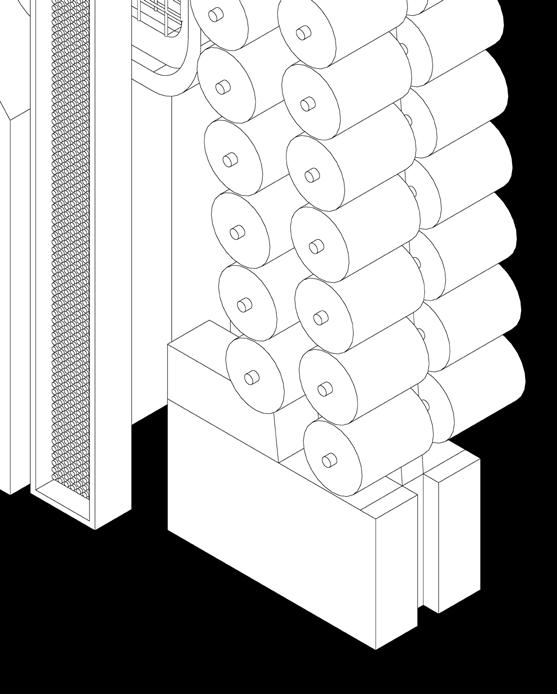
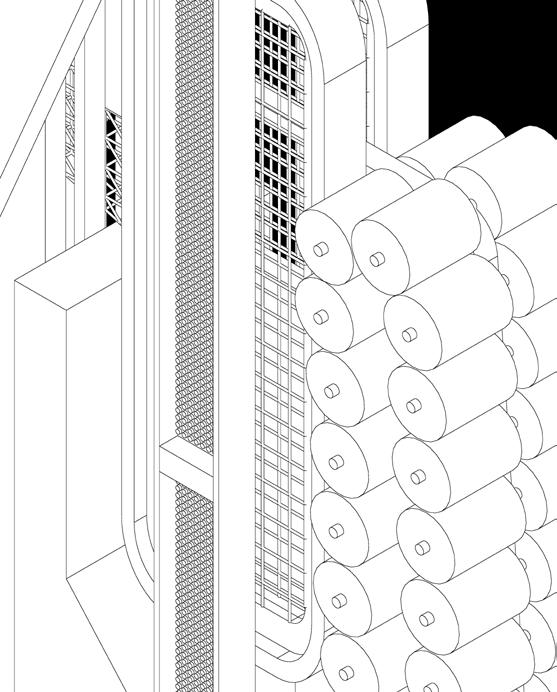
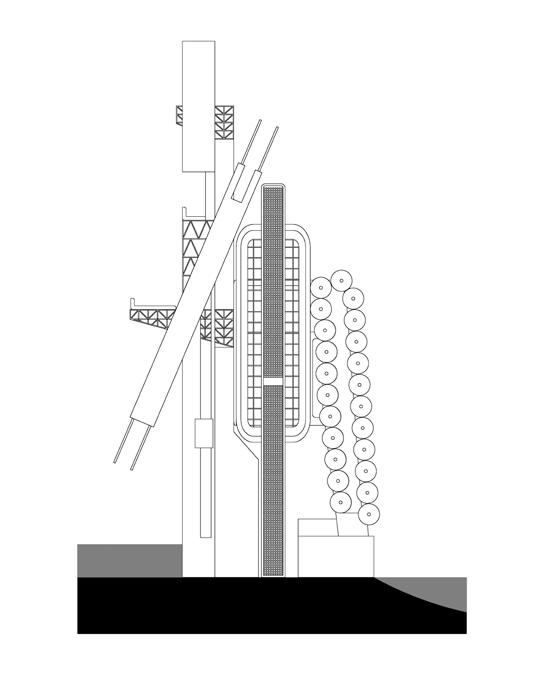


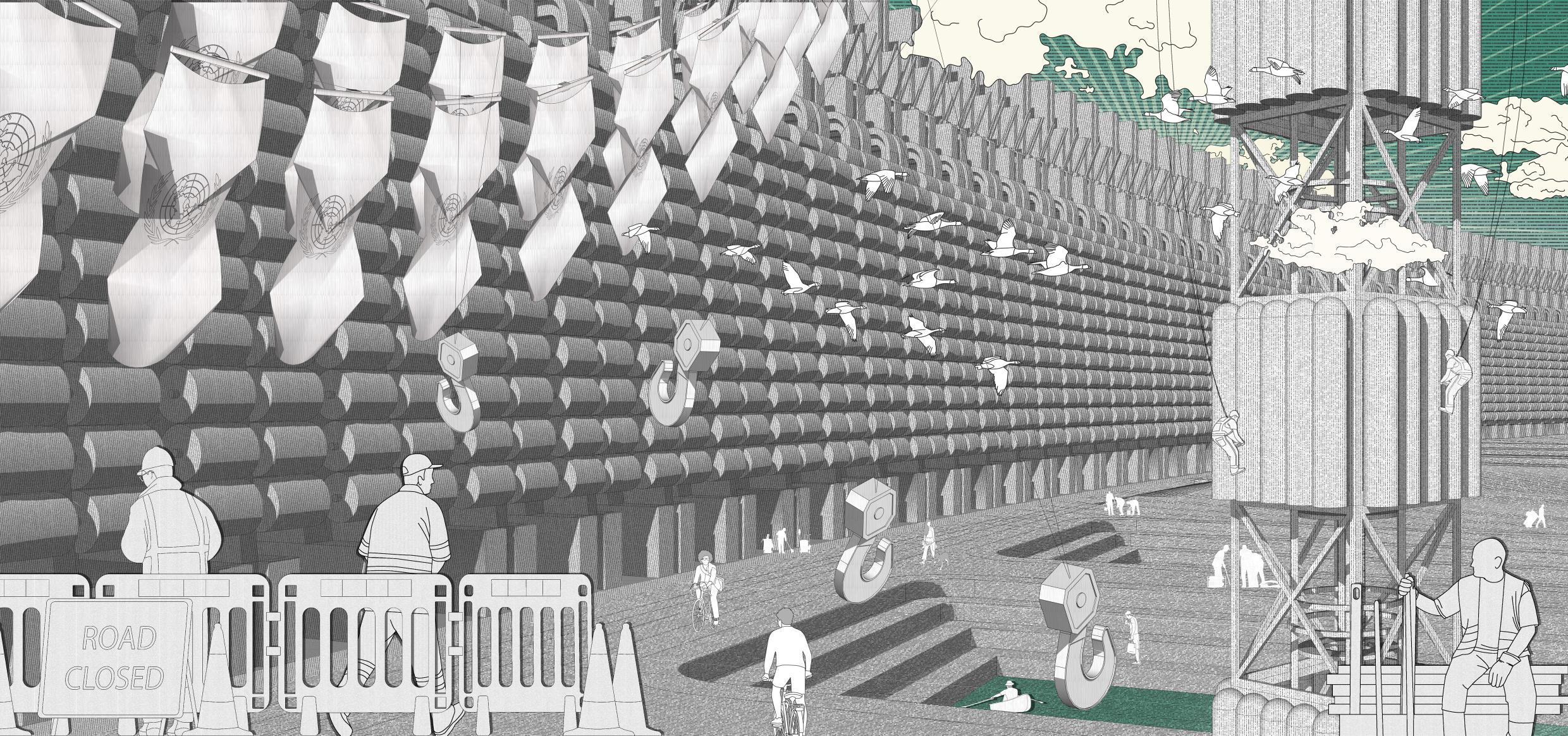
The filter tanks filter and desalinate the sea water extracted from the wetland. The desalinated water is then used for human consumption and irrigation.
The wind turbine attached to the desalination tower is able to generate electricity from wind energy in order to offset any energy demand during peak hours.
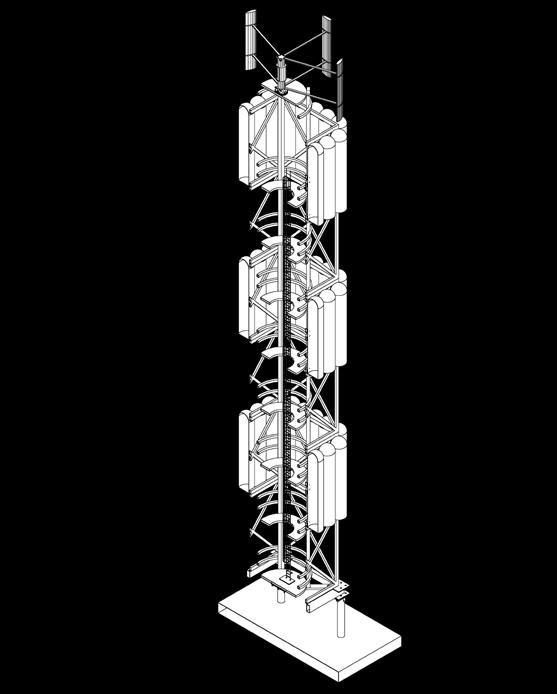
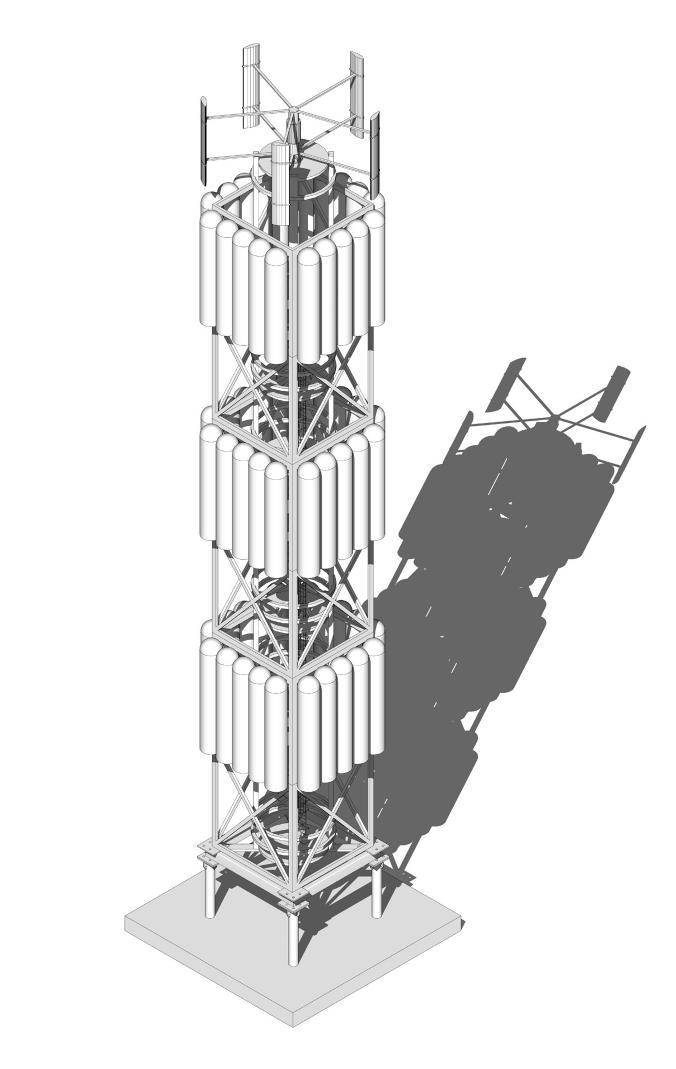
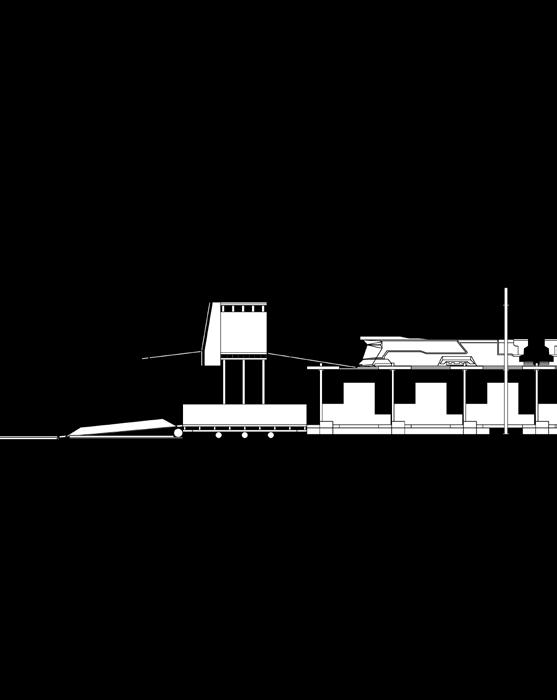
Fixed ladder is installed within the tower to provide maintenance workers an easy access to maintain the filter tanks.

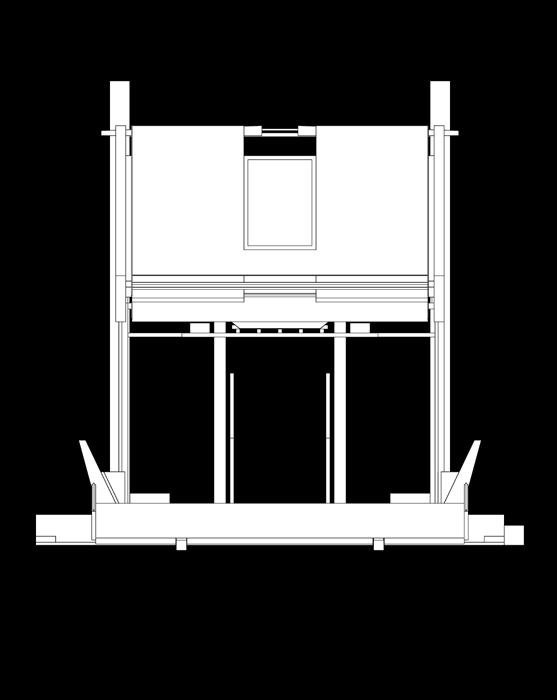

The grid is part of a linear megastructure that comprised of a fixed network of transportation lines and footpaths with a programme that could change and evolve as the population’s needs dictated.
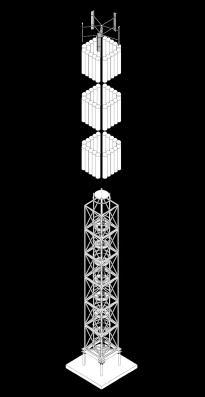
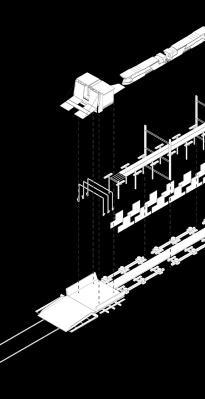

The entrance of the grid acts as a small port to facilitate the import and export of goods, and also the delivery of products in the capital.
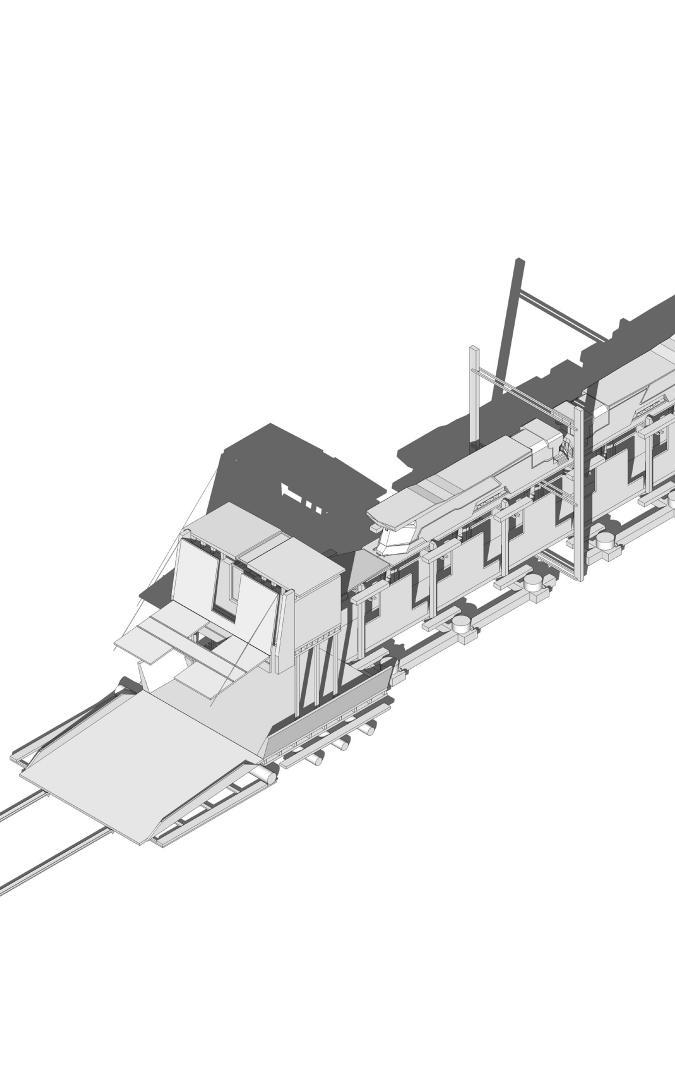
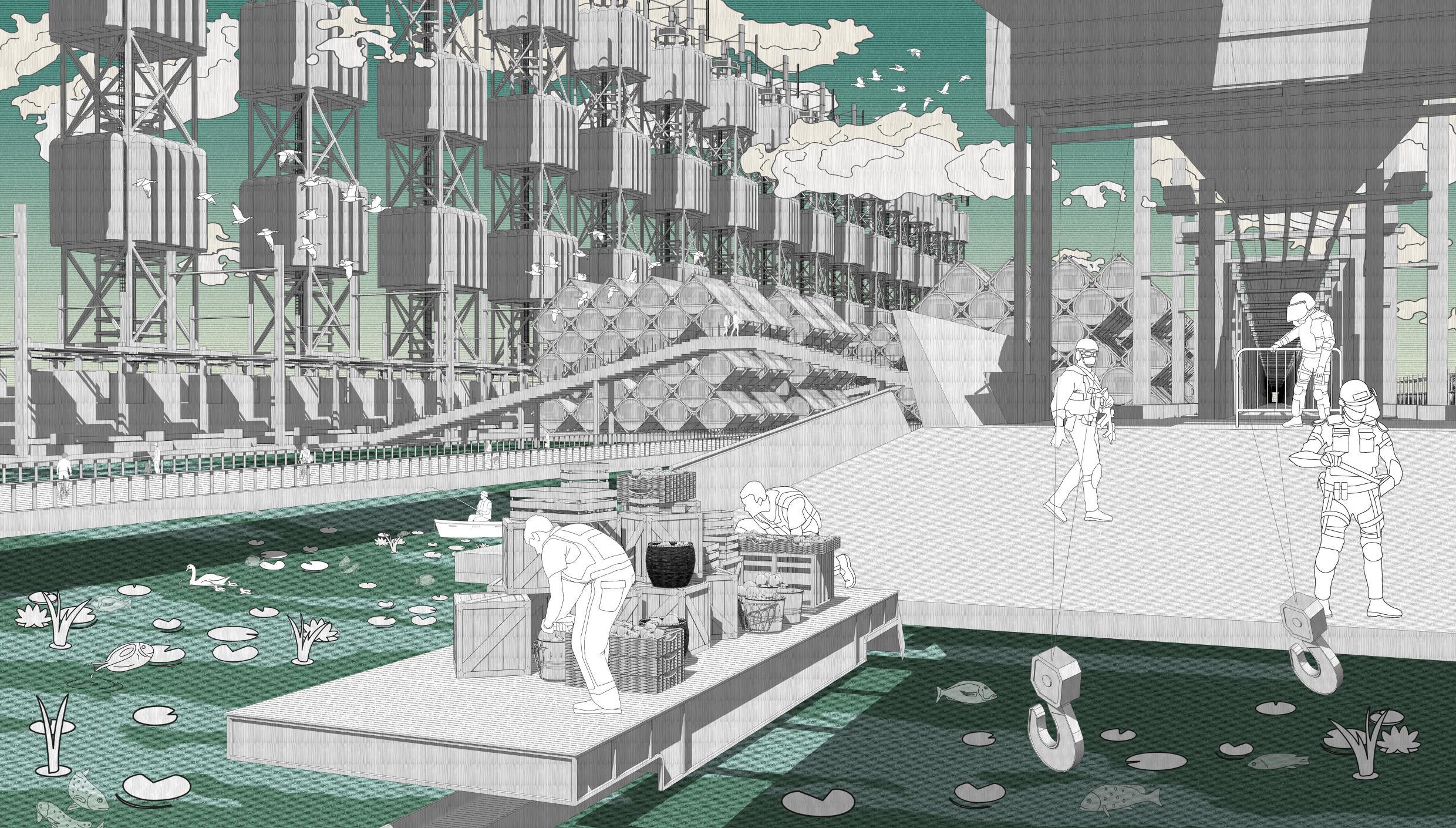


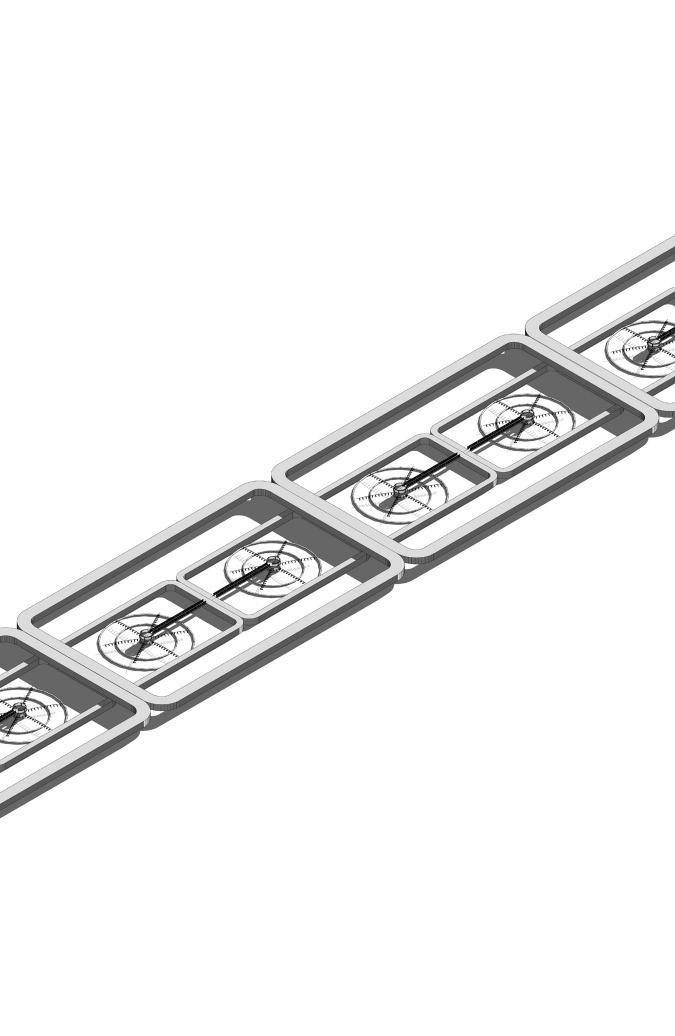
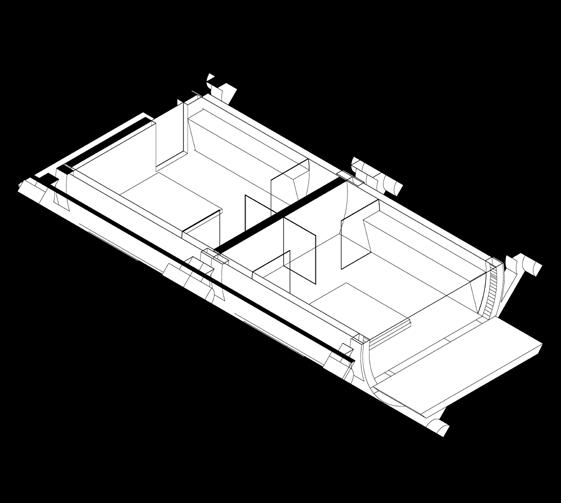

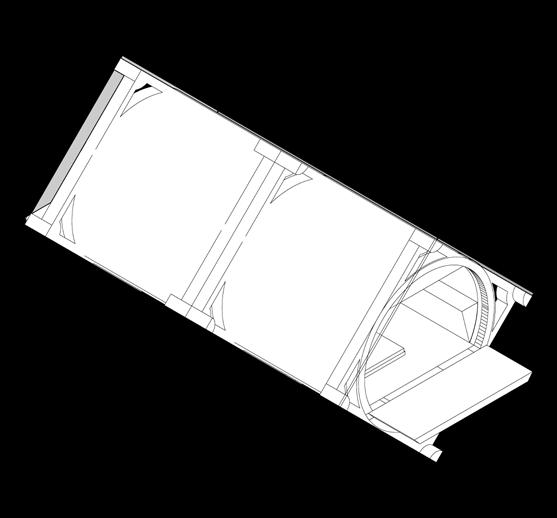
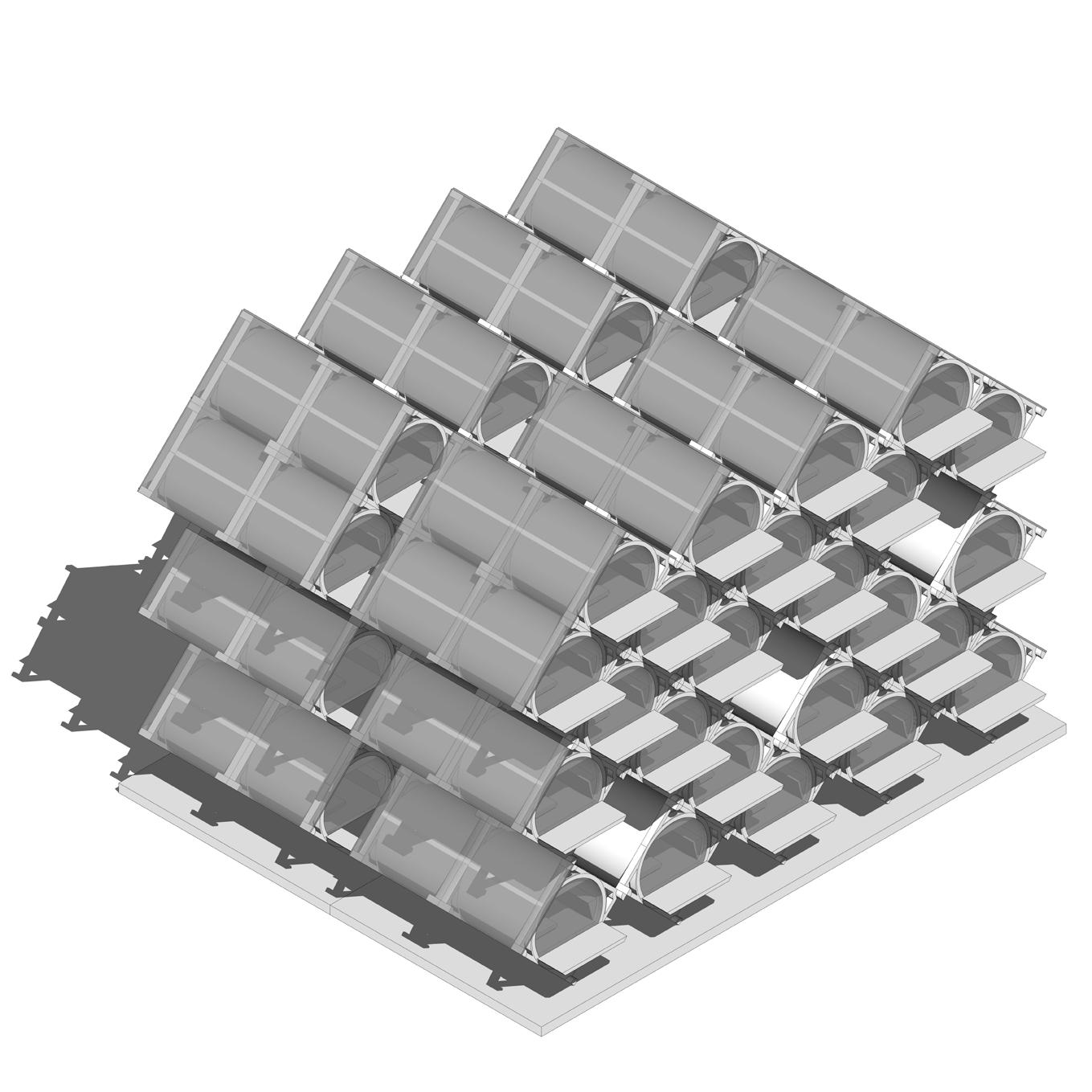
The modular houses are sectional prefabricated houses that consist of multiple parts or sections which are manufactured in the facility and then assembled on-site using a crane.
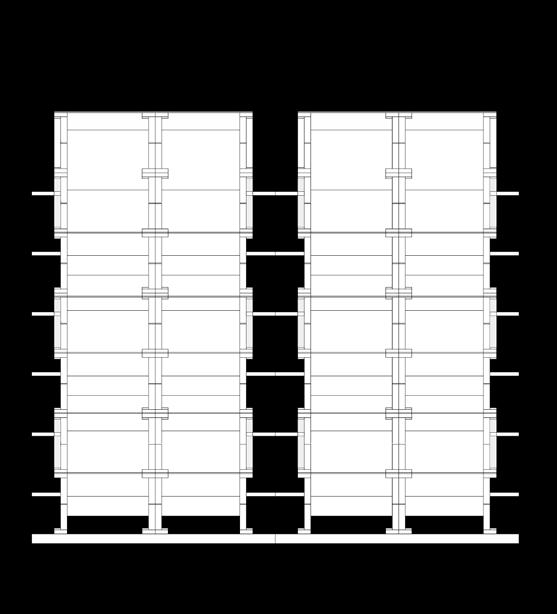
The construction of the houses consists of three structural steel frames supporting the inner frame that holds the components of the houses.
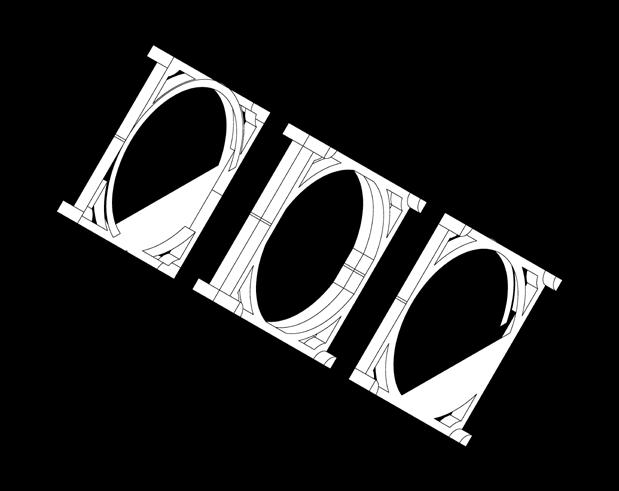

A food production system that pairs aquaculture (raising aquatic organisms such as fish, prawns and oysters in tanks) with hydroponics (cultivating plants in water) where the nutrient-rich aquaculture water is fed to the hydroponically grown plants.
This is to encourage the pescatarian diet of consuming seafood and plants instead of meat as the meat industry is one of the main contributor to global greenhouse gas emissions and there is not much land left for agricultural land.

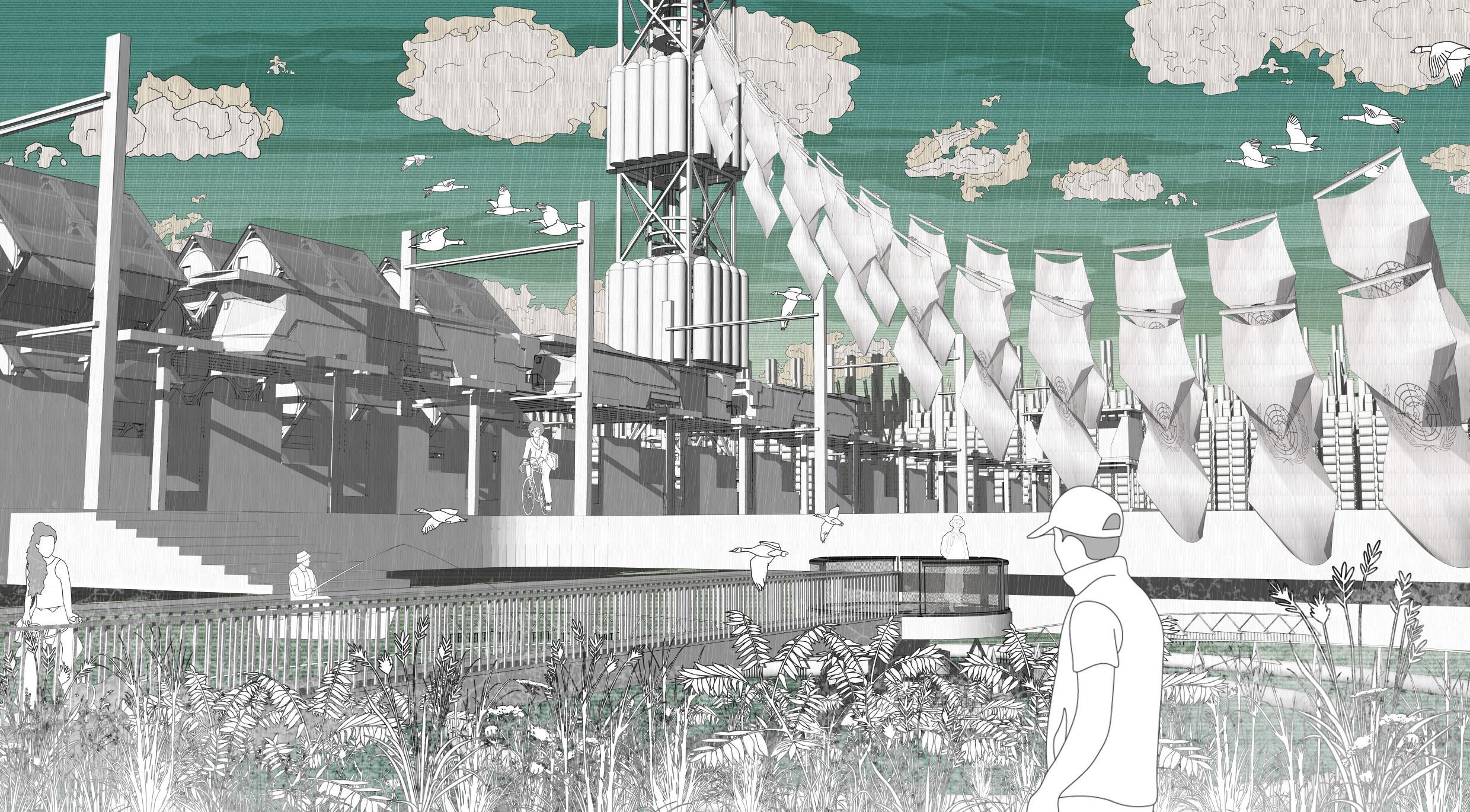
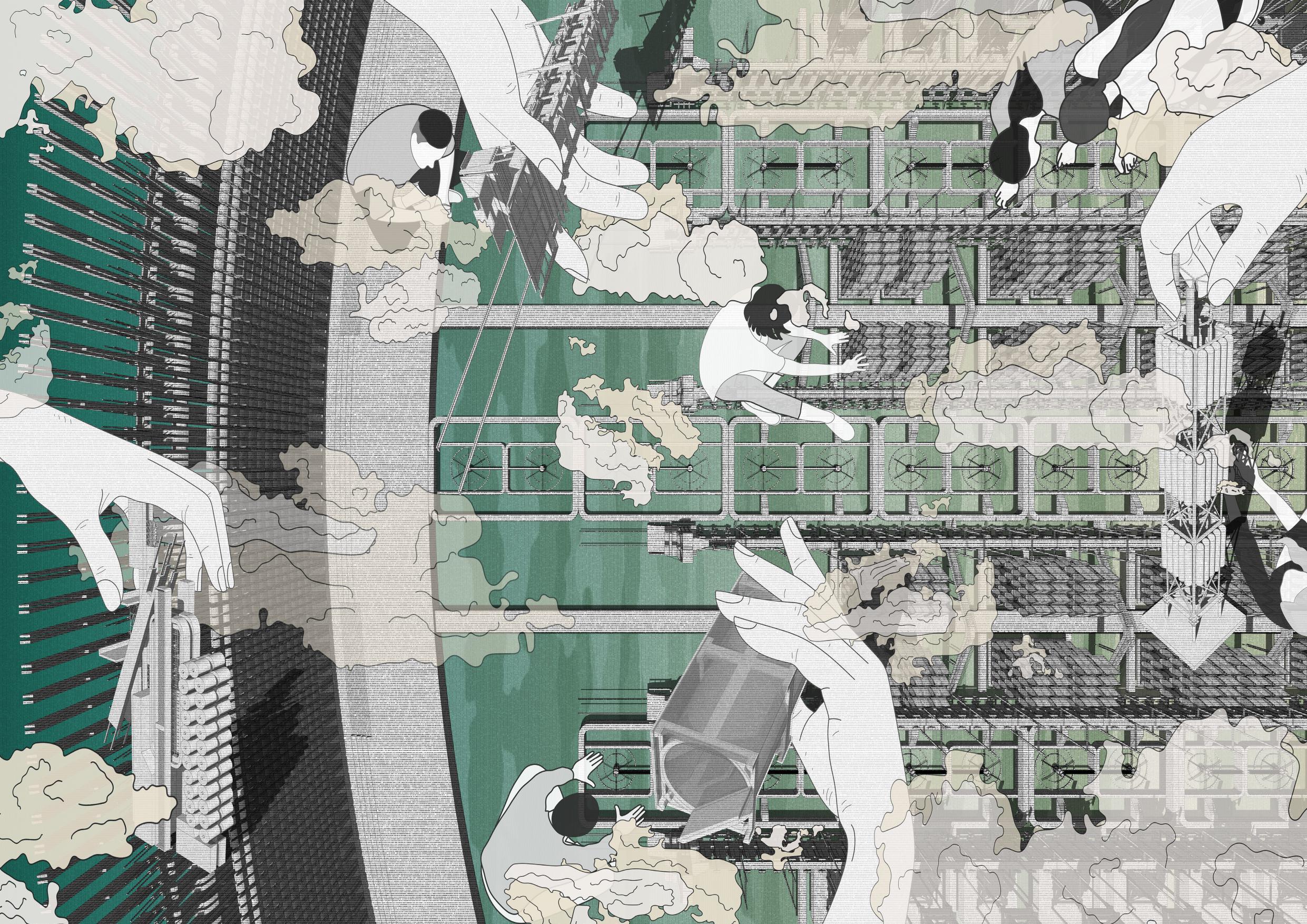
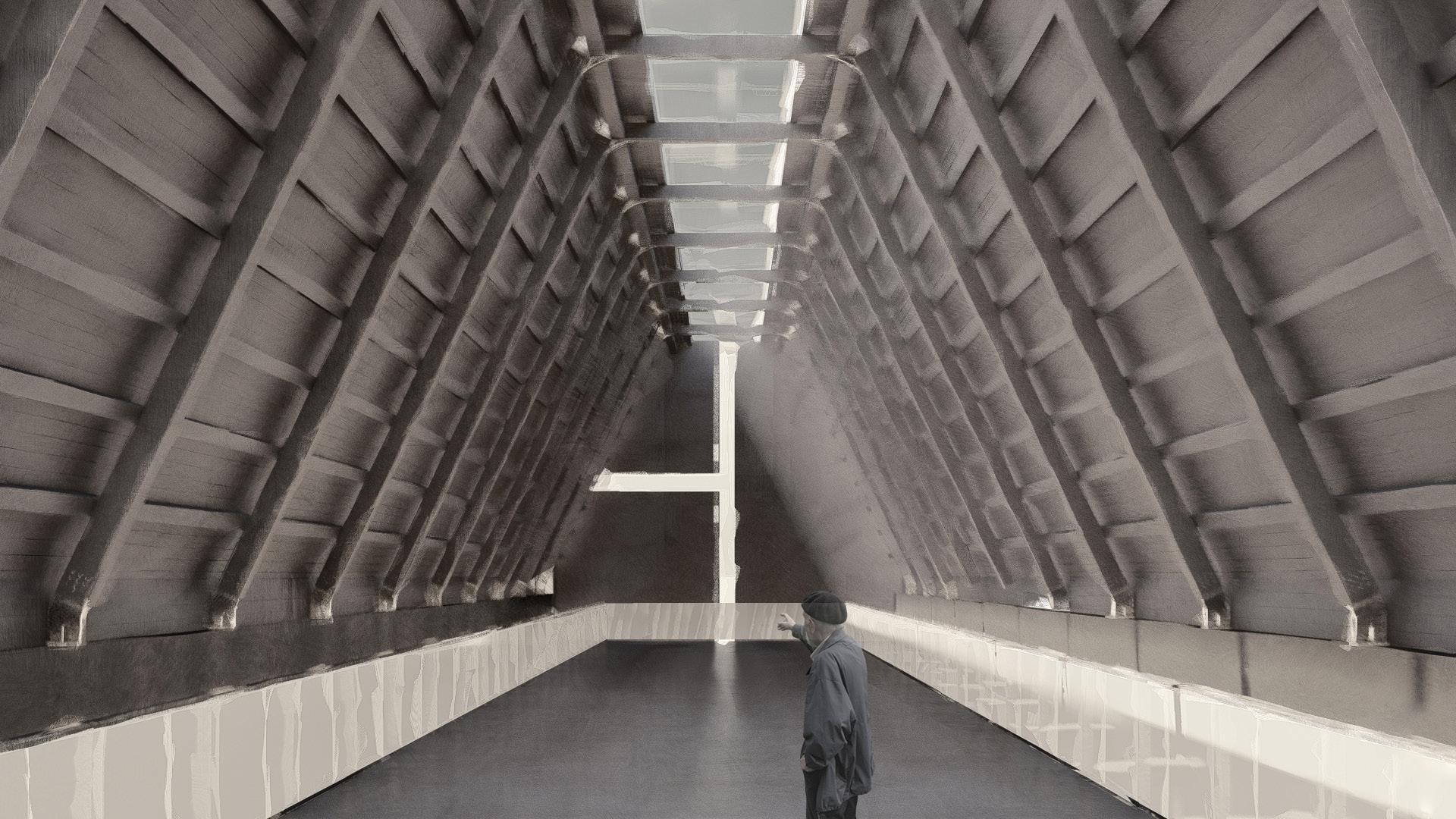
The aim of this thesis is to transform Govan into a powerful financial and social engine building a thriving mixed-use district by the waterfront that is alive around the clock.

By reclaiming the waterfront as public realm and introducing recreational spaces will help re-establishing the relationship of the locals and River Clyde which is absent as of present. This will allow people to interact more with the river and not seeing the river as a barrier.
Establishing a boatyard will provide the much needed job opportunities to the locals to use their expertise on boatbuilding to rejuvenate the site by being productive.
Providing mixed-use affordable housing near to the boatyard for the workers and locals will eliminate problems like lack of transports and accessibility to their work place. Retail spaces on the ground floor that is alive around the clock will bring life back to the site to prevent and reduce crime rates.
The purpose of establishing a shipyard museum is to educate the younger generations and serve as a reminder of the shipbuilding history of Govan. This will re-establish the identity of people of Govan as the masters of shipbuilding.
The design concept is a top view of several ships at a dock, where the ships are arranged in a pattern similar to random brush strokes at one direction.
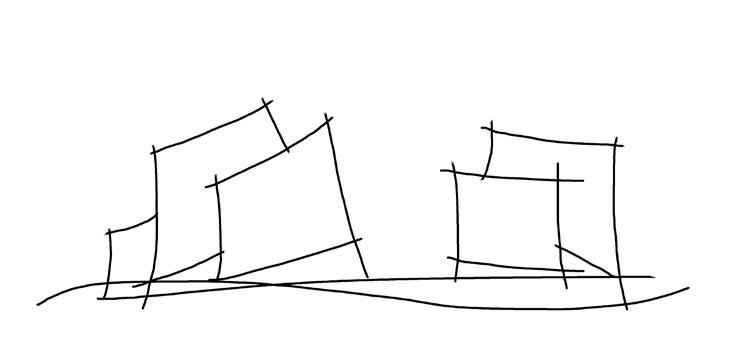
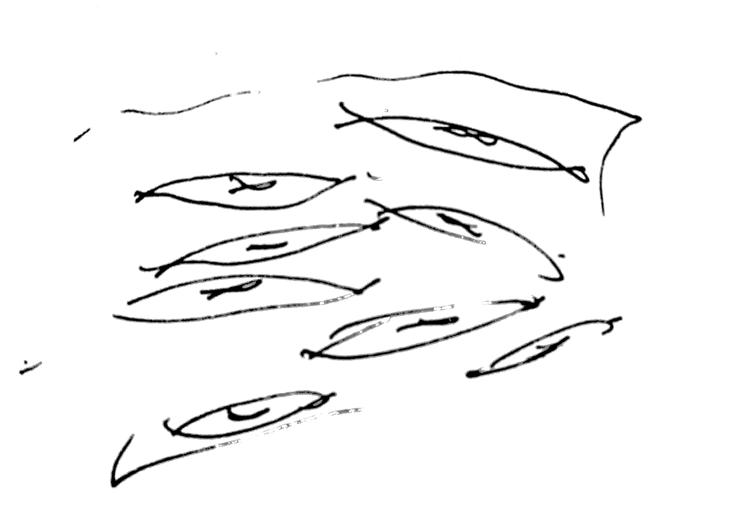
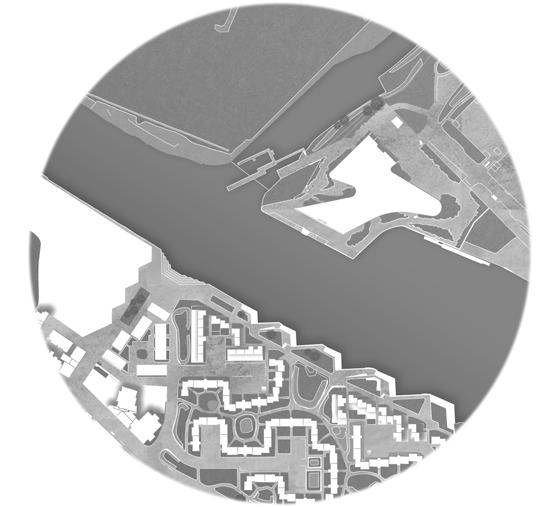
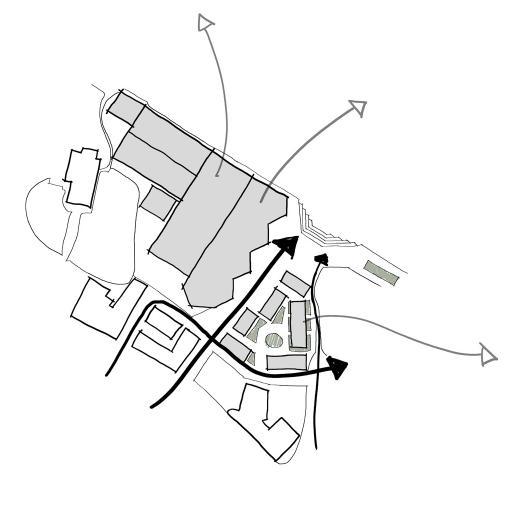
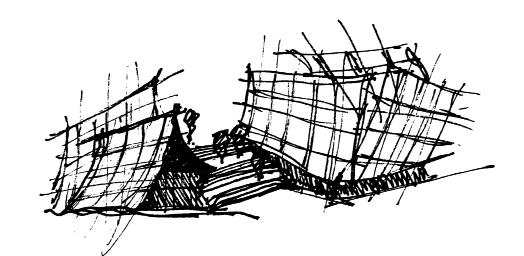
The design proposal will follow closely to this concept, where the individual hull of buildings touch at a tangent point to form circulation route between them.
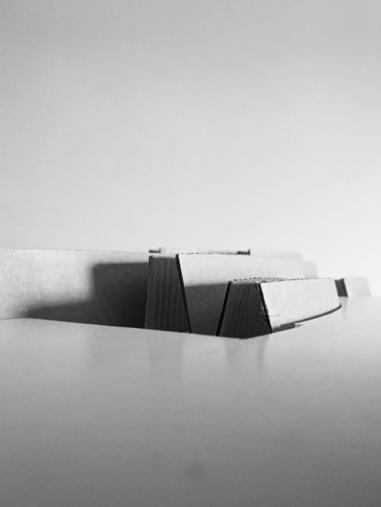

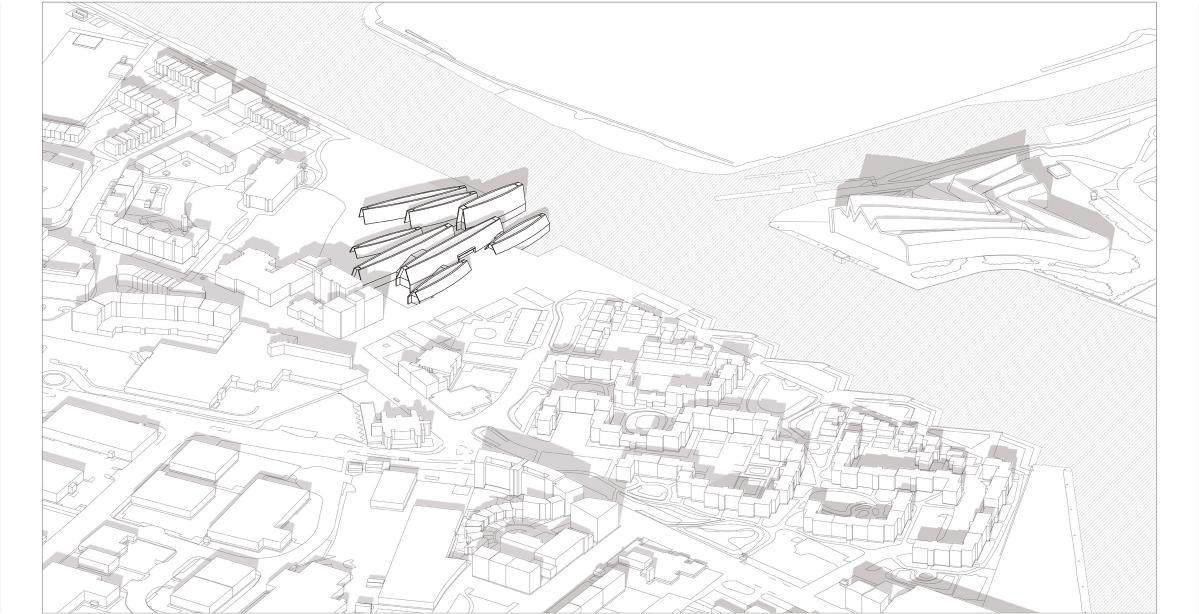
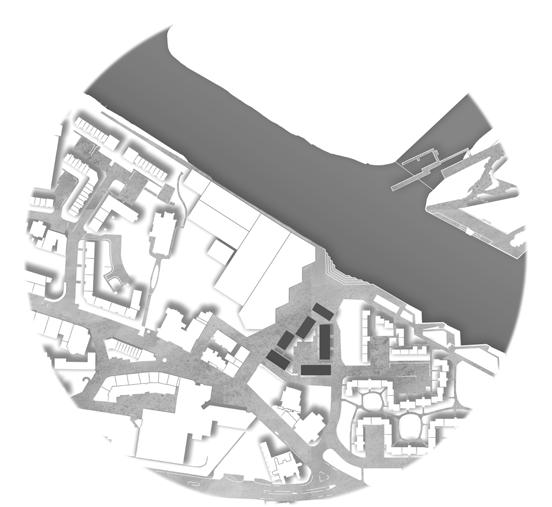
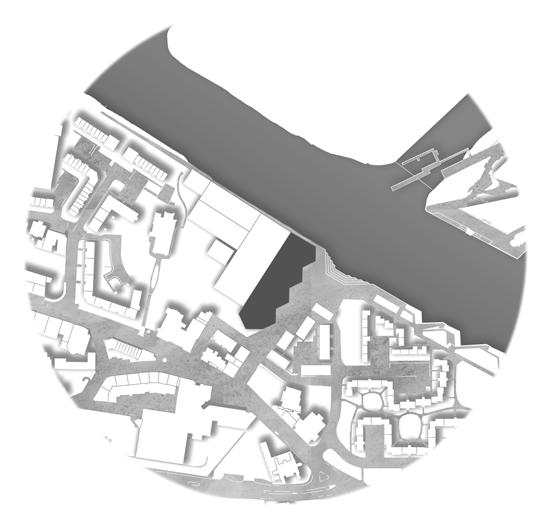

Initially, the design was futuristic and stylized, similar to the Riverside Museum by Zaha Hadid on the opposite side of the river.
Although it followed the aforementioned design concept, it wouldn’t sit right within the context, as Govan was a shipbuilding town where craftsmanship and attention to details were celebrated.
Hence, more emphasis was placed on the tectonics of the buildings, where the science of architectural construction is celebrated as an art form, similar to shipbuilding or boatmaking.
The facade initially took inspiration from the sails of sailing ships, which have multiple layers of materials that possess an origami aesthetic but it gradually changed to the form of a boat hull that is still under construction. This is to emphasize the connection between the functioning boatyard and the shipyard museum, and allowing the architectural language visible to the eyes.
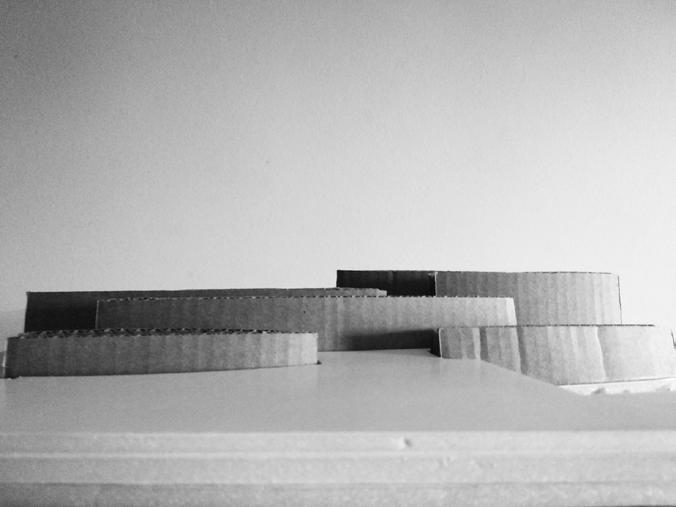 boatyard shipyard museum housing pedestrians route to waterfront residents route to waterfront
waterfront greening boatyard shipyard museum housing
boatyard shipyard museum housing pedestrians route to waterfront residents route to waterfront
waterfront greening boatyard shipyard museum housing
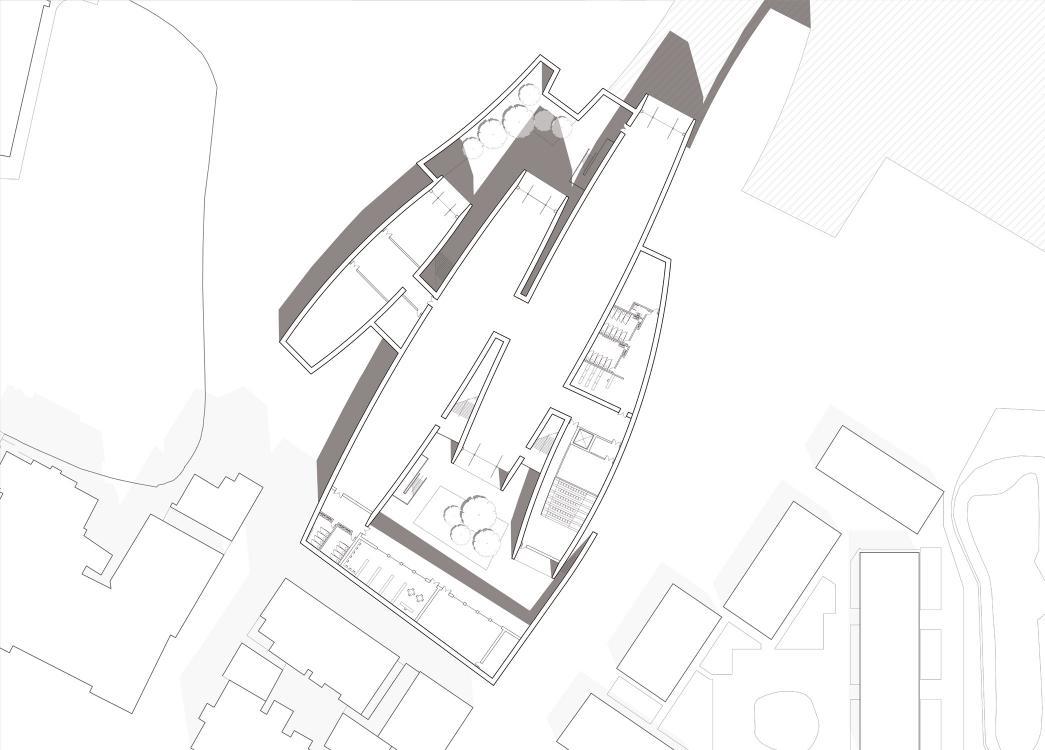

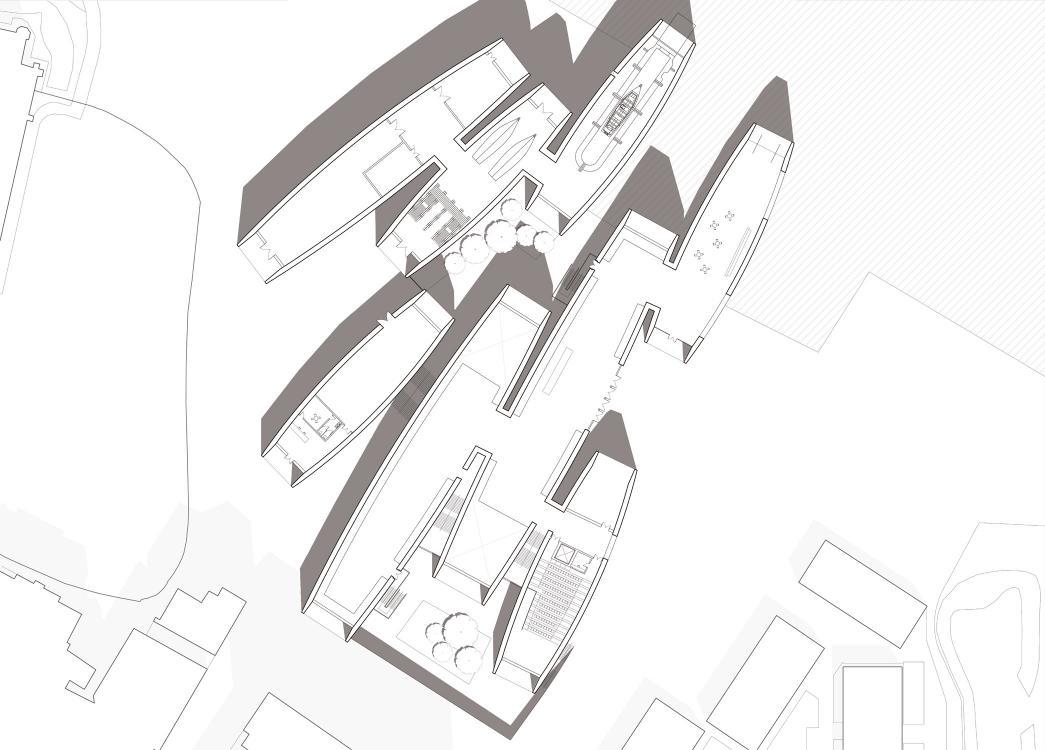


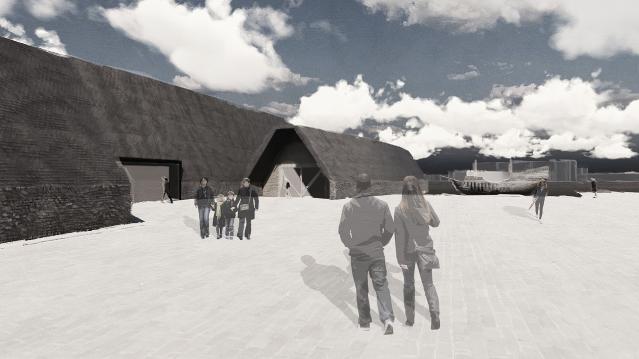
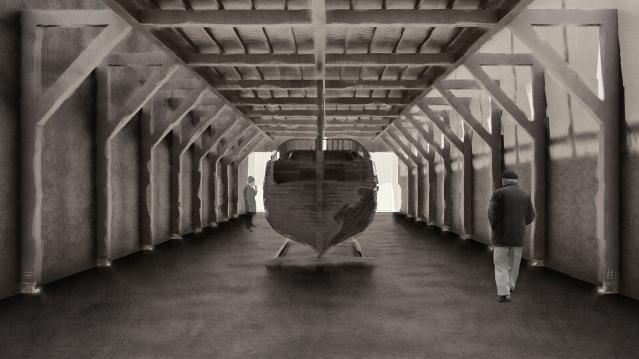

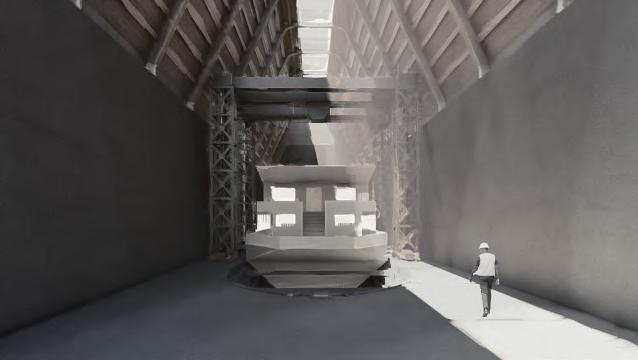 1. foyer
2. cafe
3. auditorium
4. sunken courtyard
5.exhibition space
6. office
7. storage space
8. cutting room
9. painting room 10. treatment room
11. boatyard 12. dry dock
1. foyer
2. cafe
3. auditorium
4. sunken courtyard
5.exhibition space
6. office
7. storage space
8. cutting room
9. painting room 10. treatment room
11. boatyard 12. dry dock
• Keylite double glazed flat glass rooflight
• 200mm metal flashing
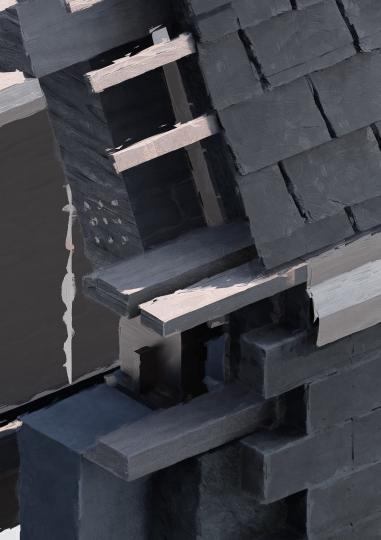
• breather roofing membrane
• 22x100mm surface waterproof boards with 5mm gaps
• 200mm rockwool insulation
• vapour barrier
• 50mm rockwool insulation
• 22x125mm V Tongue & Groove (T&G) Oak Internal Cladding
• 250x200mm horizontal glulam beam
• metal bracket
• 175x150mm purlin
• slates
• breather roofing membrane

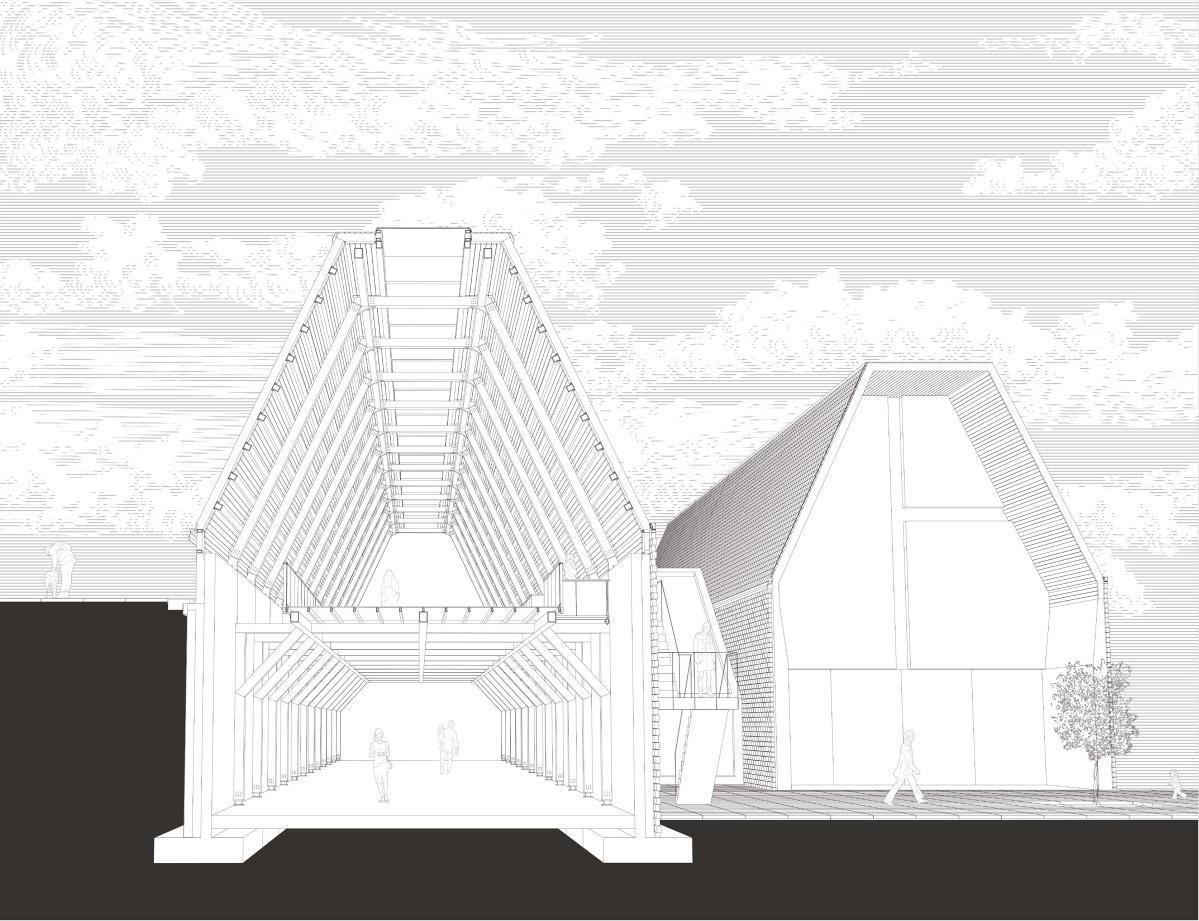
• 22x100mm surface waterproof boards with 5mm gaps
• 175x150mm purlin
• 200mm rockwool insulation

• vapour barrier
• tilting fillet
• 50mm rockwool insulation
• 22x125mm V T&G Oak Internal Cladding
• 250x200mm vertical glulam column
• metal flashing
• steel base plate
• 100mm brick veneer
• angle bracket
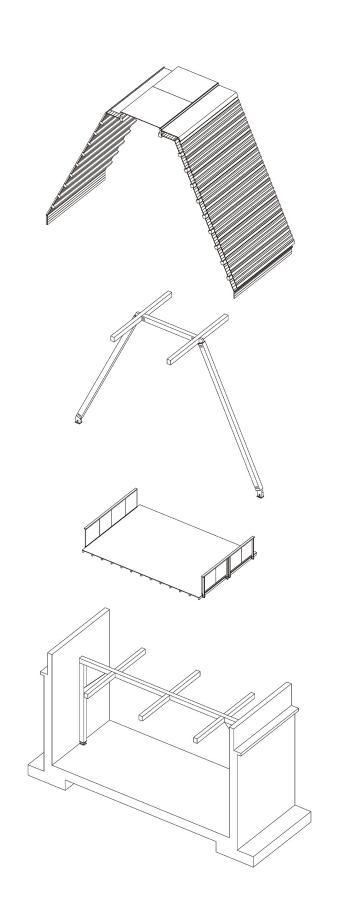
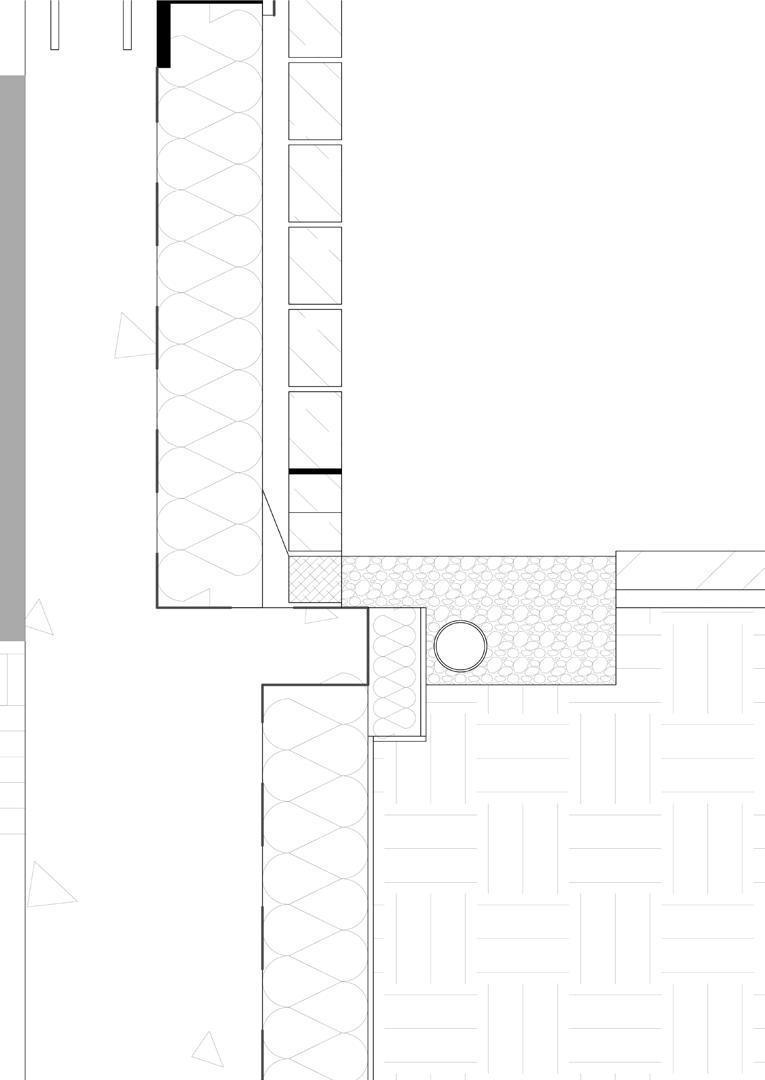
• 250mm thick concrete retaining wall
• 100mm brick veneer
• DPC (150mm above ground)
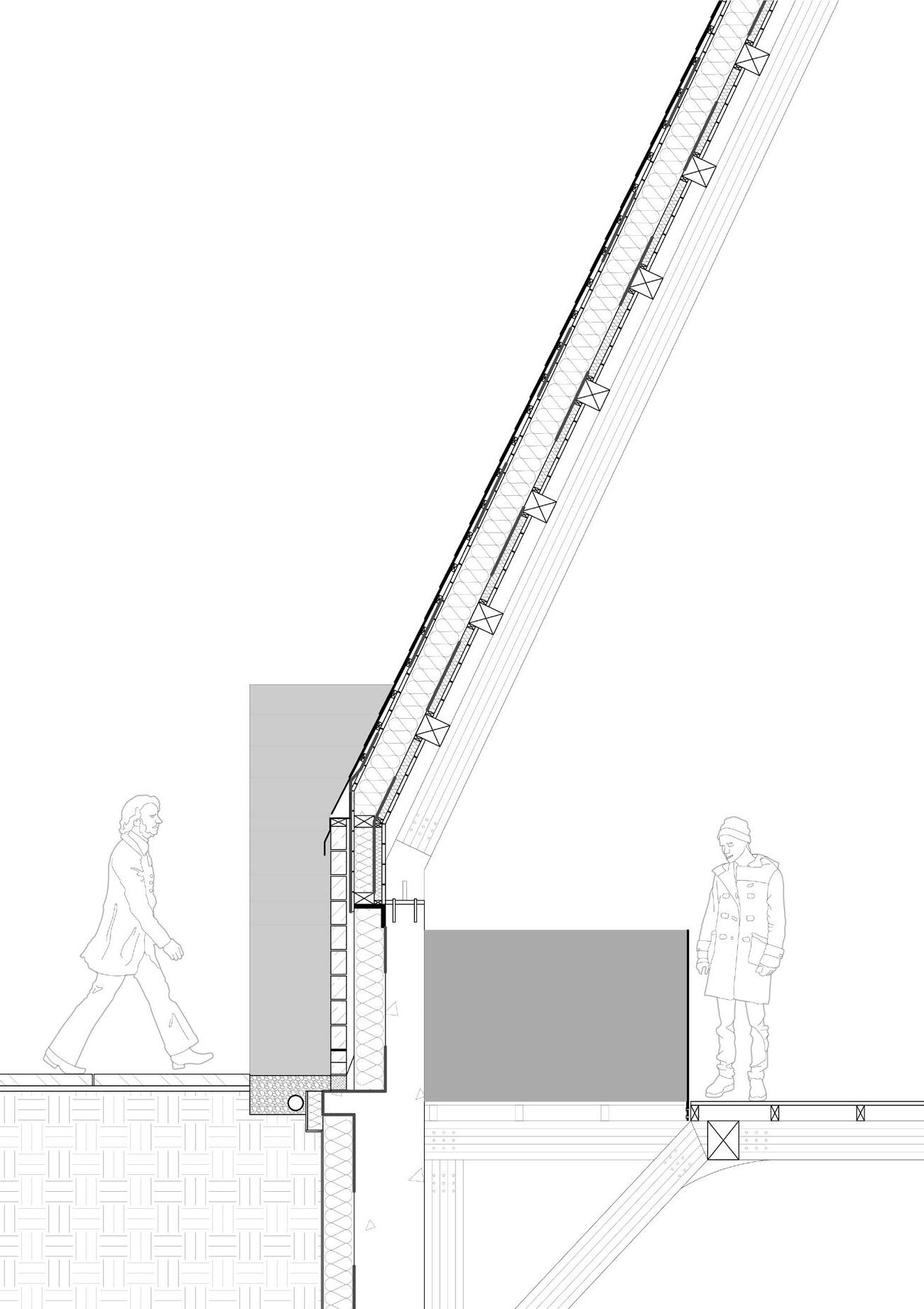
• weephole @ 900mm centres
• concrete fill
• insulated brick
• 75mm thick paving slabs
• 35mm bedding sand
• gravel
• drainage pipe
• 10mm protection board
• 200mm rigid insulation
• tanking
• 450mm thick concrete retaining wall
timber purlins & rafters with skylight
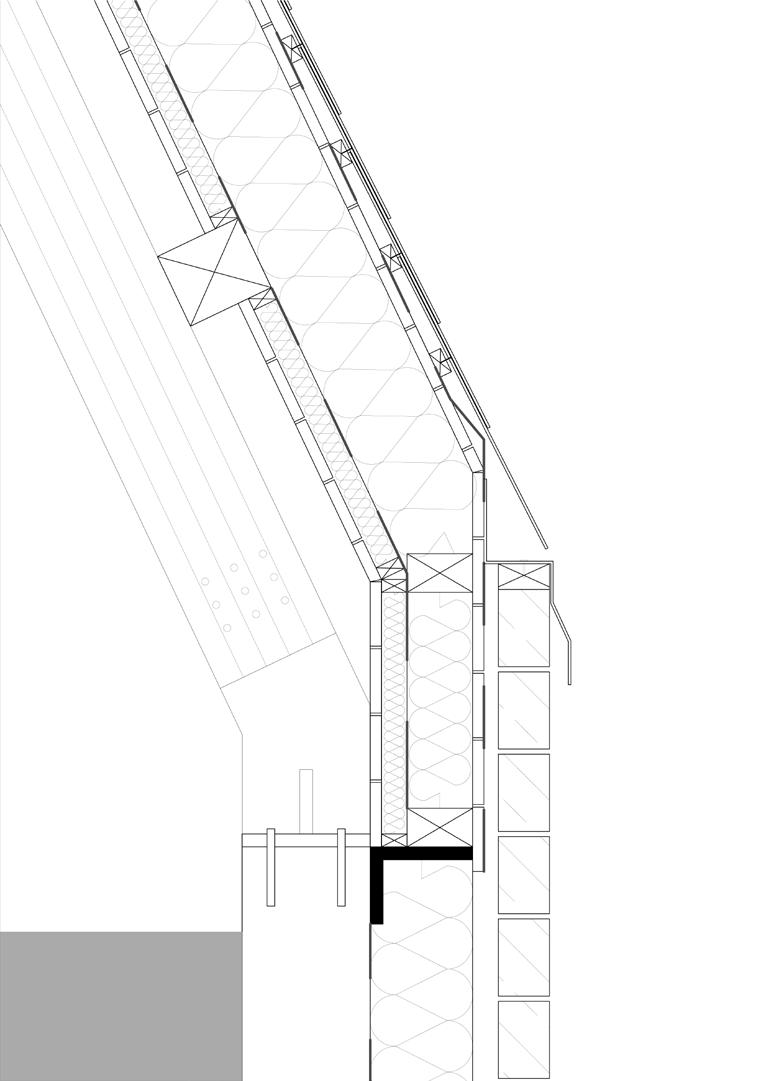
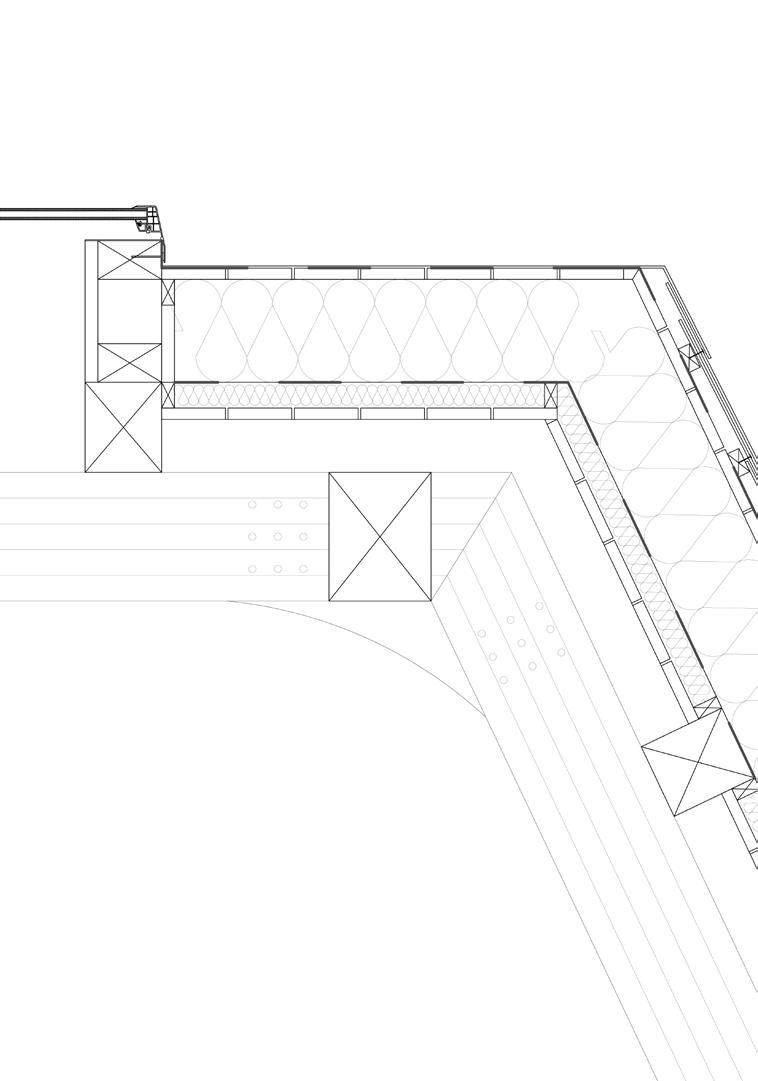
glulam beams & columns
timber floor
concrete retaining wall with glulam beams & columns
 presentation model
presentation model
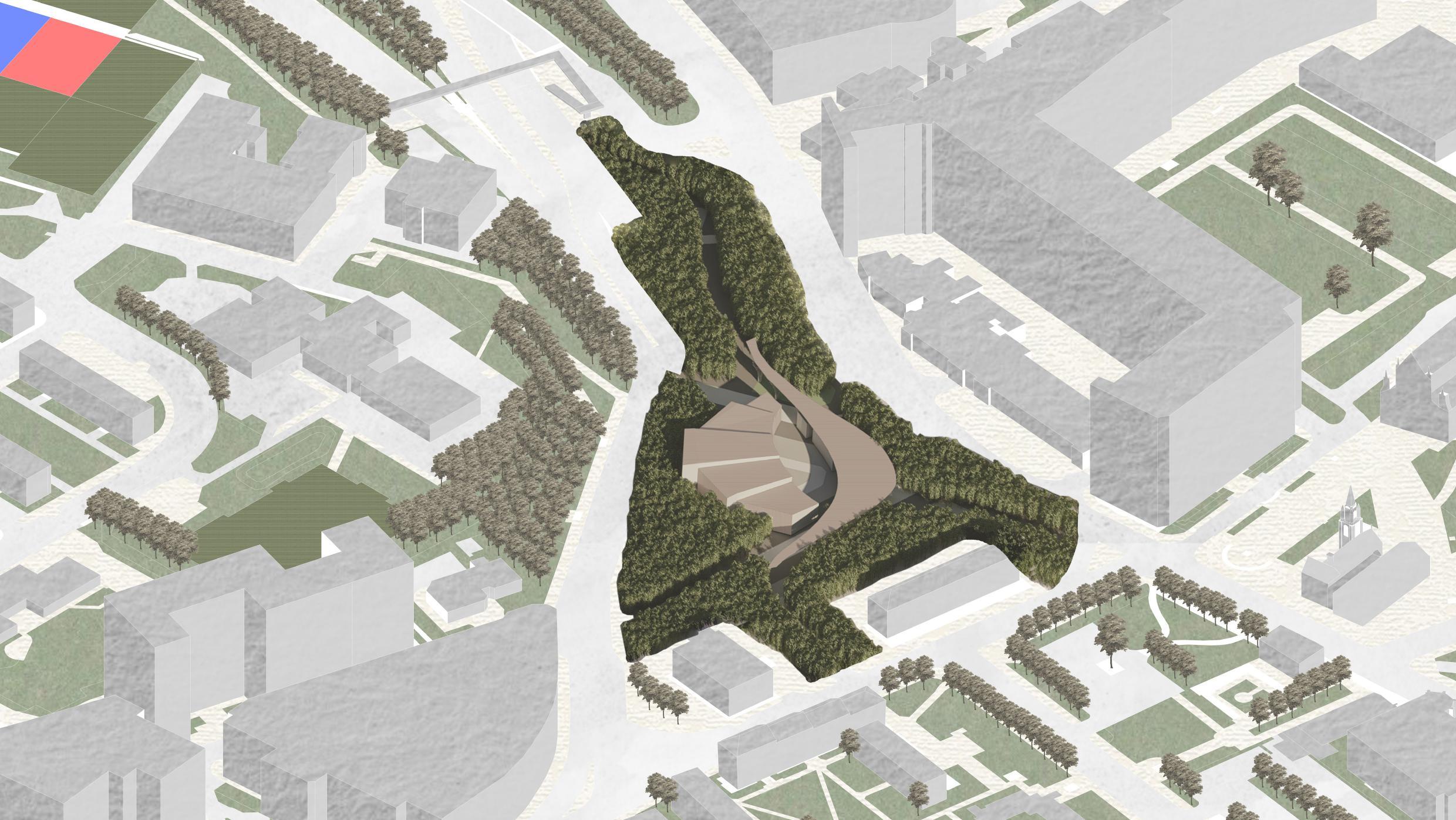
The site is an island, set in between the University of Strathclyde Library and the Glasgow Royal Infirmary. It is surrounded by sensitive context and many intersecting roads. The site has little to no purpose other than as parking spaces.
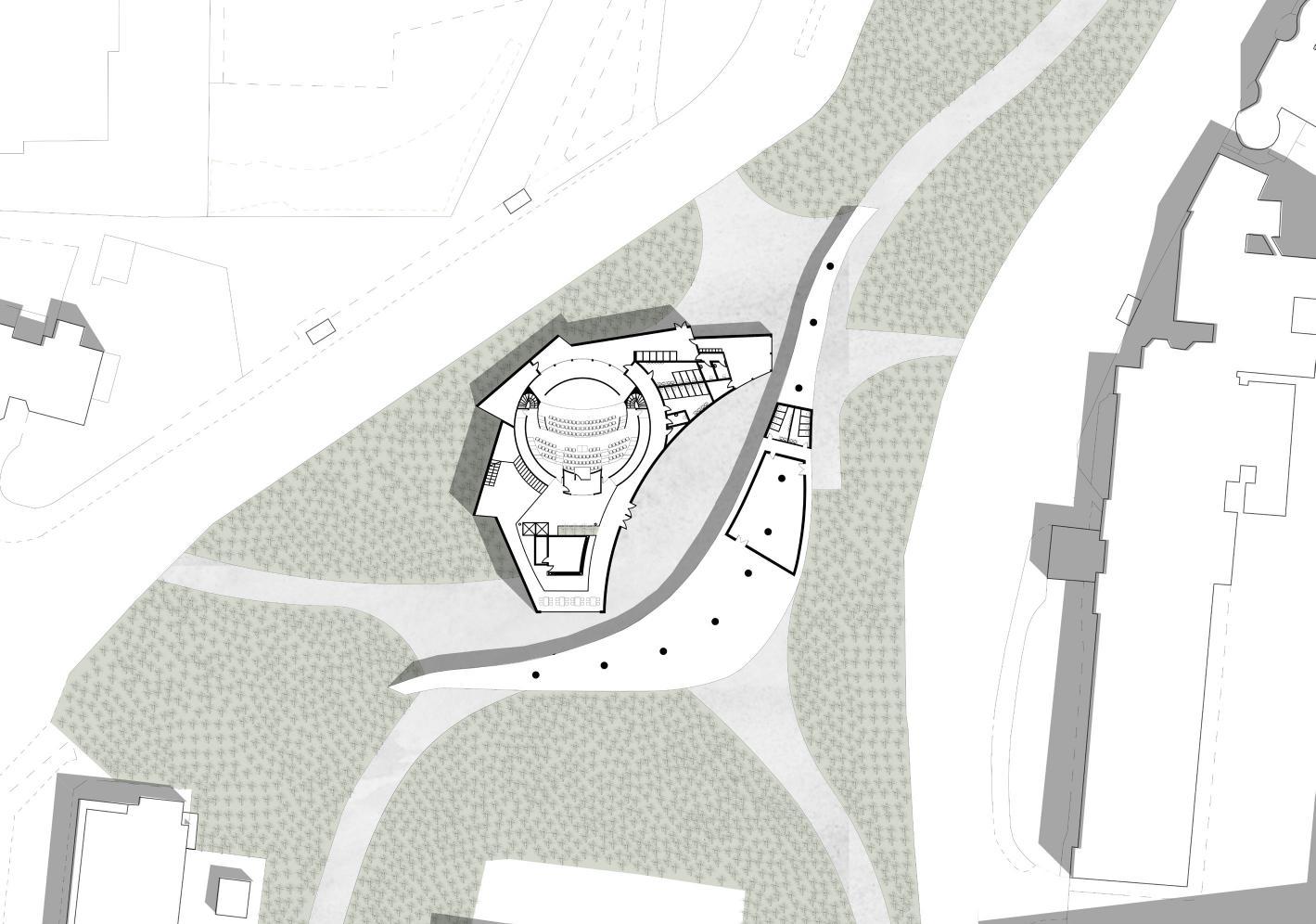
There are a few issues on the site that need to be addressed:
• high pollution area
• poor pedestrian access
• dead space
• excessive roads
• an overhead bridge positioned badly
This design proposal aims to tackle these issues, especially to reduce the particulates in the air and to introduce new purpose to the site.
The design adopts a more organic shape, almost like an “yin-yang” shape where the two spaces are wrapped around each other, which makes the overall shape appears more as a whole.

The initial smooth curve of the theatre is also replaced with stepped-curve, to give contrast to the market’s already rounded shape.

• reaches maximum growth as pollution filter in 3 years, other trees need 25 years.

• absorbs particulates and purifies the air.
• acts as natural sound barrier by reducing the noise produced by the traffic.
• provides a more pleasant view for the pedestrians and patients in the hospital.
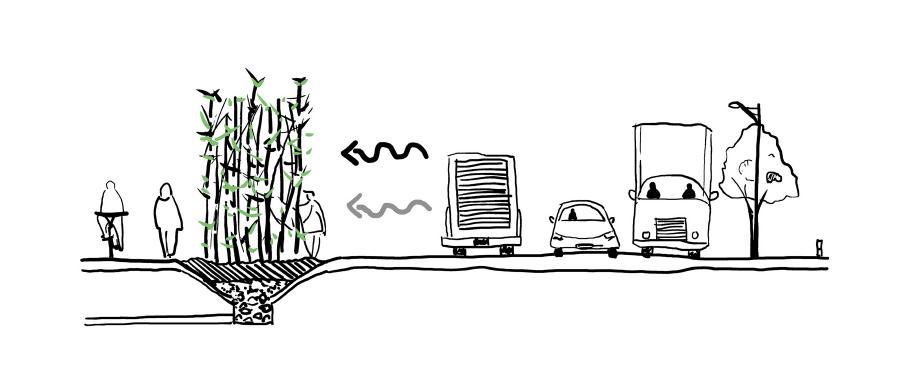 Urban Bamboo Biofilter
Urban Bamboo Biofilter
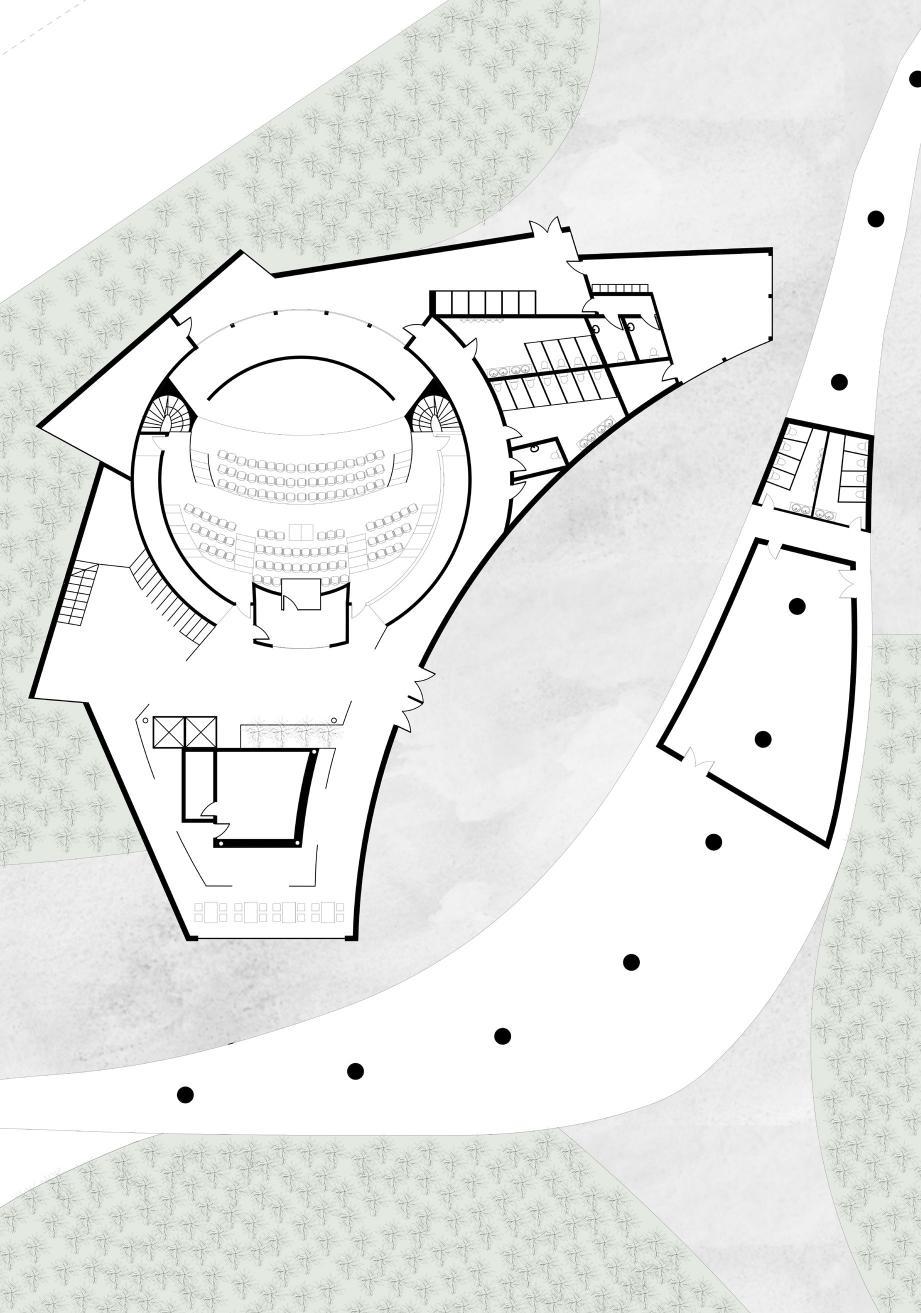
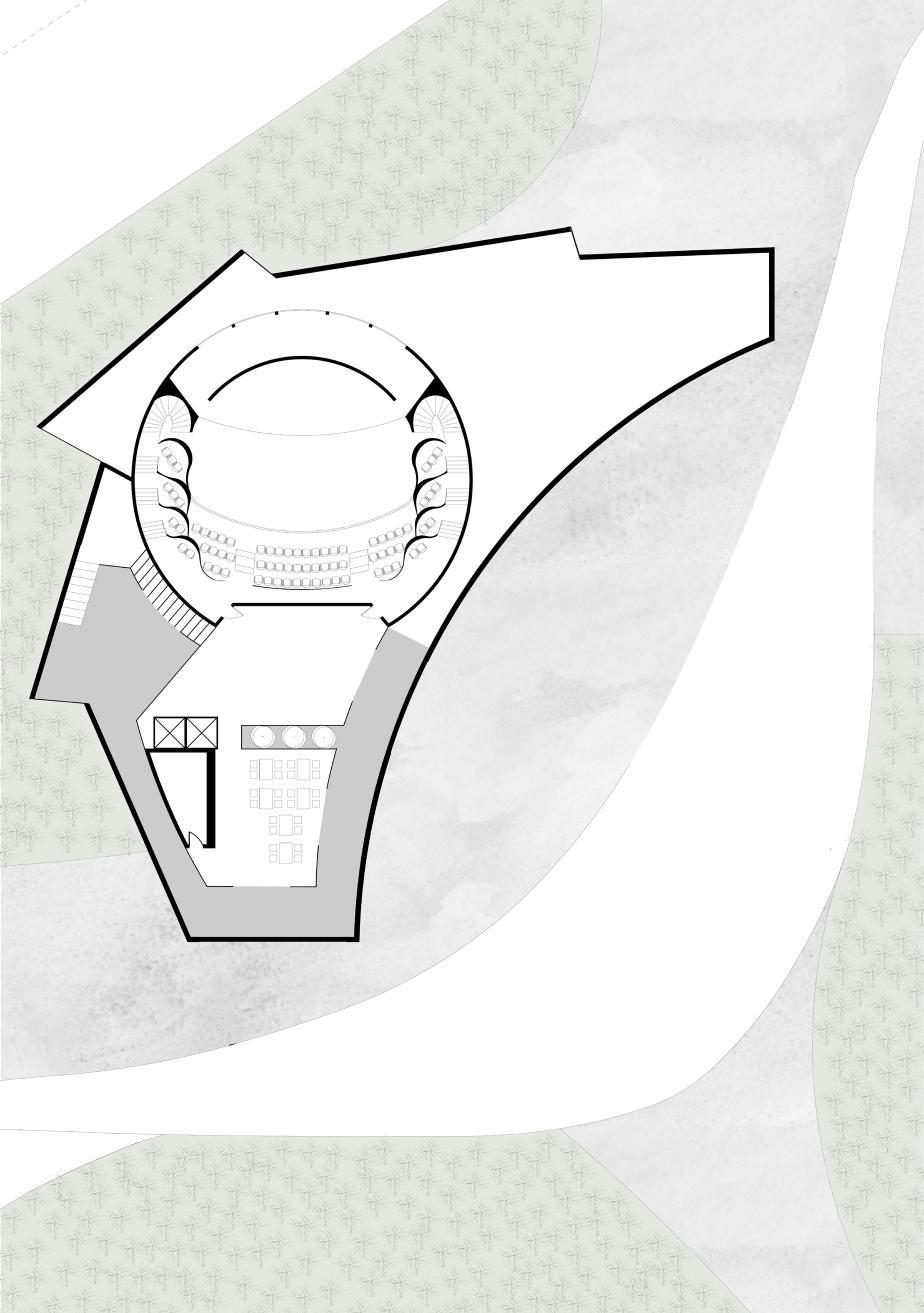 1. bar
2. foyer
3. lifts
4. reception/ control room
5. ramp
6. wheelchair seating area
7. plant room
8. stage
9. green room
10. toilets
11. changing room
12. rehearsal room
13. store
14. workshop
15. market
1. cafe
2. lifts
3. foyer
4. auditorium entrance
1. bar
2. foyer
3. lifts
4. reception/ control room
5. ramp
6. wheelchair seating area
7. plant room
8. stage
9. green room
10. toilets
11. changing room
12. rehearsal room
13. store
14. workshop
15. market
1. cafe
2. lifts
3. foyer
4. auditorium entrance
